6 Things I’ve Learned On My Fitness Journey

My fitness journey began during my university days, back in 2015, when I fell in love with home workouts. Since then, my fitness journey has taken on new paths, and somewhere along the way, I’ve learnt a lot about myself as a person. I’ve had successes, I’ve had failures and I’ve had a lot of lessons to learn from, that’s for sure.
In this blog post, I share with you all 6 things I’ve learned on my fitness journey so far. If you’re just starting out, or need a little bit of a helping hand, then perhaps you’ll find this post helpful in finding your own success in your personal fitness journey.

1. Fitness isn’t one size fits all
No matter what the latest fitness trend is, fitness doesn’t fit all. Over the years, I’ve gone from working out in the comfort of my living room to deadlifting 110kg during a CrossFit class, and along the way I’ve slowly come to realise that it takes months, if not years, to figure out what your passion is when it comes to fitness.
I always say that whatever keeps you coming back for more is what will work for you in the long run. Figure out what is best for YOU. What are your goals? What do you enjoy? What workouts motivate you? Do you prefer yoga or lifting weights? It’s important to ignore the trends and the workouts your favourite influencers do, and instead focus on yourself. There really is no one-size-fits-all when it comes to fitness, so get out there, experiment and find what makes you tick. Nowadays, I love a mix of everything: yoga, running, weight lifting & swimming.
2. Rest is a part of training
I learned the hard way that rest is just as important as your workouts. It’s so incredibly important to allow your body to rest so it can recover and grow, and most importantly, so you can utilise your training! Thinking about it now, I used to feel somewhat proud of myself for going weeks without taking a rest day, but now I couldn’t think of anything more damaging!
I often speak about the importance of rest days on my IG page , especially as I’ve had to help support my body with imbalanced hormones over the past year, so for me, rest is just as important as what I do in the gym. I can happily say that I now work out 3x a week while synching my hormones to my menstrual cycle to help support my body further!
3. Your fitness journey will change over time (and that’s ok)
I think as humans we often fear change, especially when it comes to what we already know, but over the years you’ll find that your workouts will change, especially as you go through different phases in your life. When I first started working out I worked out from home following a guide that mostly consisted of cardio 5x a week. Since then I’ve tried my hand at CrossFit , running almost half a marathon , yoga and I’ve even got back into swimming .
It’s safe to say my fitness journey has certainly changed over the years and what I’ve realised most along the way is to fully embrace the change. Because whatever I did at that moment in time, I did it because I enjoyed it. And when things started to shift again, it’s because I needed a boost of motivation or a change of scene (and that’s ok).
4. Too much of a good thing can be bad
I suppose this ‘lesson’ comes from my heart as it’s one of my biggest regrets in my fitness journey. I’ve been battling with imbalanced hormones for almost 3 years now, which were caused by overtraining, under-fuelling & not allowing my body the rest it truly deserves. While exercise can be extremely beneficial to our health, it’s also a stress to the body and just like anything, too much of a good thing can still be bad for you.
Over-exercising can increase cortisol levels and too much cortisol can wreak havoc on the body, including imbalanced hormones, poor sleep & mental health issues. Don’t make the same mistakes I did. Fuel well, maintain a healthy relationship with exercise, prioritise sleep, listen to your body & take enough rest days. Signs of overtraining include poor sleep (waking up in the middle of the night), increased PMS, little to no progress with your workouts, mood swings, period issues, weight gain, water retention, bloating, and more.
5. It’s not about the calories you burn
I used to get so hung up about the calories I burnt at the end of my workout that I often chose the most intense workout just so I could feel like I really smashed an intense workout (I know, I know, you don’t need to tell me). Now, I’ve learned to ignore the number because I’ve finally learned that the real importance is how you feel after a workout – not the silly little score at the end of a workout.
Focusing on what really makes me feel good in the gym (or wherever I am), has actually really helped me progress well throughout my fitness journey. It’s allowed me to find my true passions, whereas before, I would have ignored exercises like yoga or mobility work because they ‘simply didn’t burn enough calories’. Although, let me just say that yoga can burn a heck load of calories! That stuff is sweatyyy!
Luckily, I’m in a really good mindset with exercise now, and depending on how I feel on the day, I’ll choose whatever exercise my mind and body craves that day – not how much it’ll burn. Love that for me.
6. Health > fitness
I’ve left the most important one till last. It’s taken me a long time to prioritise my health before my gym goals, but I’m at a point in my life where if I don’t feel good or haven’t slept well the night before, I won’t workout. Period.
I’ve learned along the years that while fitness can feel like it’s doing wonders for my body, it can in fact be doing the opposite.
Nowadays, whenever I find myself lacking in motivation (yes, really), I ask myself how I’ve been treating my body…
Am I sleeping ok? Or am I waking up throughout the night?
Am I consuming too much social media?
How’s my anxiety doing?
Do I feel tired?
Did I get more than 7 hours sleep last night? If not, does my body REALLY need to go to the gym?
What was my recent period like? Was it later or earlier than ususal? (note: those on the pill will find it harder to track as you’re experiencing a fake period).
The days when I start feeling unmotivated, stressed and fatigued, I no longer see the gym as a priority. Instead, my health HAS to come first. So many of us view fitness as a key priority when it comes to our health, but actually, if you’re running on 5 hours sleep 6x a week, then you’ll probably best off sacking your 5.30am workout for some much needed zzzzzzz and taking things easy.
What do you think? I’d love to know what you’ve learned during your fitness journey in the comments below. Come and say hi!
Gym+Coffee Haul 2021 / Athleisure Outfits / Honest Review
De vere wokefield estate hotel review / uk weekend getaway, you may also like, how i stopped intense exercise to help balance..., how to stay positive during winter, how i started yoga at home & stuck..., how to exercise again after a long break:..., how i stopped obsessing over fitness & food, gym+coffee haul 2021 / athleisure outfits / honest..., my self-care habits for 2021 / mindfulness &..., how i’m syncing my exercise with my menstrual..., the return of running: running with a hormonal..., the toxic truth about your yoga mat: is....
It defintiely ebbs and flows and you have to go with it. Rest is a good one too – although not too much rest!!!
The blog is fantastic!! Fitness is defined as any physical activity that promotes and maintains the health of the body’s various systems. Health, on the other hand, comprises all of the body’s systems like gummies, and can only be obtained via a healthy lifestyle. Thank you for sharing this useful content with us! – Nidra Nutrition https://www.nidranutrition.com
[…] a fitness journey can be daunting, but with the right mindset, it can be an enjoyable and empowering experience. Here are some tips to help you get […]
Leave a Comment Cancel Reply
Save my name, email, and website in this browser for the next time I comment.
The Ultimate Guide To Staying Motivated On Your Fitness Journey
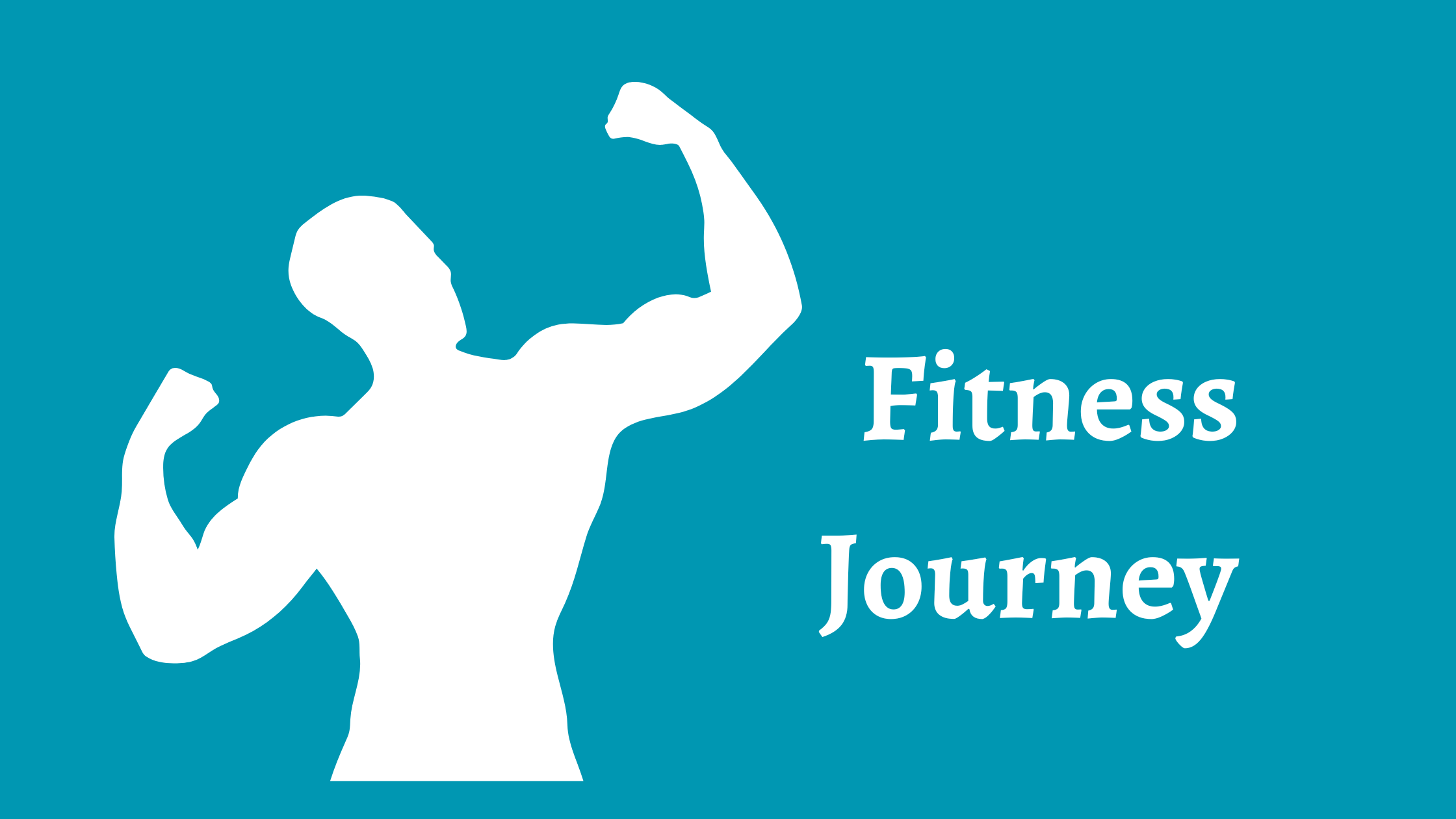
Embarking on a fitness journey is a transformative experience that promises a healthier, happier, and more vibrant version of yourself. However, staying motivated throughout this journey can often be a daunting task. There are days when fatigue sets in, self-doubt creeps in, and the allure of skipping a workout becomes tempting. Not to mention that distractions can come from anywhere that could disrupt you from resuming your daily fitness routine.
Thankfully, there are certain strategies and techniques you can do to keep your motivation soaring high and stick to your fitness journey. So, keep reading and get ready to unlock your full potential and discover the secrets to staying motivated as you embark on the transformative path toward a healthier and fitter you.
- Set Realistic Goals
One of the challenges of regular exercise is easily losing focus in such a short time. This can happen when you start a fitness routine without any goal in mind. Exercising without any objective can make it easy for you to lose focus since you don’t have any clear direction or purpose. It’ll also be harder for you to track your progress and see any results when you don’t have any goal.
Thus, before starting your fitness journey, ensure to set realistic goals first. Define both short-term and long-term objectives and break down your goals into smaller milestones. Furthermore, don’t forget to celebrate these smaller victories to keep you motivated and reinforce your progress. Remember, the success of your fitness routine is in the journey, not in the results.
- Find Your ‘Why’
Understanding your personal motivation is vital to sustaining your fitness journey. Reflect on why you started in the first place. Whether to improve your health, boost self-confidence, or enhance your overall well-being, remind yourself of these reasons regularly. Your ‘why’ will be a powerful driving force to keep you on track when motivation wanes.
- Create A Routine
Creating a routine is a powerful strategy that can significantly contribute to your motivation and success in achieving your fitness goals. The routine will provide structure, organization, and consistency, helping you overcome obstacles and stay focused on your fitness journey.
Create a regular workout schedule that syncs with your daily routine and ensure to stick to them. A routine teaches consistency, consistency breeds discipline, and discipline fuels motivation. Make exercise a non-negotiable part of daily life, like brushing your teeth. The more it becomes a practice, the easier it will be to stay motivated.
- Find Accountability
Some people find it hard to stay motivated in their fitness routine when they’re alone or don’t have anyone to share the goal with. To keep you focused and committed to your routine, you can enlist the support of a workout buddy or join a fitness community. Sharing your journey with others creates a sense of accountability and camaraderie.
Having someone to lean on during challenging times can also be incredibly motivating. Consider finding a workout partner, hiring a personal trainer, or joining fitness classes to stay connected and inspired.
- Embrace Variety
Sooner or later, your fitness routine can become monotonous, leading to a loss of motivation. Spice up your fitness routine by incorporating various exercises, like strength training, cardio, yoga, or outdoor activities. Exploring new workouts not only challenges your body but also keeps your mind engaged and excited about your fitness journey.
- Track Your Progress
Tracking your progress is crucial in staying motivated on your fitness journey. So, document your achievements, whether it’s inches lost, pounds shed, or strength gained, as these details provide tangible evidence of your hard work. You can use a fitness journal, mobile app, or wearable fitness tracker to monitor your progress, steps, and even heart rate with the new technologies like Fitbit HRV accuracy , these tools provide valuable insights into your fitness journey . Seeing how far you’ve come can reignite your motivation during challenging times.
- Reward Yourself
Celebrate your milestones and achievements with rewards. Treat yourself to something you enjoy, like a massage, a new workout outfit, or a day off from your regular routine. Rewards act as positive reinforcement, making your fitness journey more enjoyable and satisfying. However, do remember that rewards are a tool to motivate and celebrate your progress. They should be used strategically and in a way that supports your long-term goals. Avoid using ‘rewards’ as an excuse to return to your unhealthy habits.
- Practice Self-Care
Taking care of yourself holistically is essential for maintaining motivation. Prioritize rest, sleep, and proper nutrition. Treat yourself with kindness and listen to your body’s needs. Nurturing your physical and mental well-being will optimize your energy levels and overall motivation.
The Bottom Line
Staying motivated on your fitness journey is a lifelong process. By setting realistic goals, finding your why, establishing a routine, seeking accountability, embracing variety, tracking your progress, rewarding yourself, and practicing self-care, you’ll be equipped with the tools to maintain your motivation and achieve lasting success. Remember, the most important step is to start, and with unwavering motivation, you’ll soar to new heights on your fitness journey.
Leave a Comment Cancel reply
Save my name, email, and website in this browser for the next time I comment.
- Spiritual Health
- Drugs & Medications
- Healthy Cooking
- Fitfluencer

Say Goodbye to Cankles with These 5 Powerful Calf Exercises!
Science-backed strategies for butt fat loss: 10 exercises & more, landmine press guide: strengthen shoulders and core, arnold schwarzenegger’s back workout: a bodybuilding legacy, how to place kickboxing stance properly: mastering proper footwork, a beginner’s guide to kickboxing 101: a dynamic fitness regimen, training like titans: unveiling the secrets of mma fighters, victor richards: the original mass monster, things we must know :the science behind the power of mindfulness, unlocking success: the power of consistence.

The Ultimate Roadmap to an Empowering Fitness Journey
Embarking on a fitness journey refers to the intentional and structured pursuit of improving one’s physical fitness, overall health, and well-being. It involves setting goals, adopting healthy lifestyle habits, and engaging in regular exercise and physical activity to achieve desired outcomes. A fitness journey is a personal and transformative experience that goes beyond short-term goals and focuses on long-term sustainable changes.
A fitness journey is unique to each individual, as it is tailored to their specific needs, preferences, and starting point. It can involve a wide range of activities such as cardio exercises, strength training, flexibility exercises, and mindful practices like yoga or meditation. The journey may also include modifications to one’s diet, sleep patterns, stress management techniques, and overall lifestyle choices.
Embarking on a fitness journey holds immense significance for individuals seeking to improve their health and overall quality of life. Here are some key reasons why a fitness journey is important:
- Physical health improvement: Engaging in regular exercise and physical activity has numerous benefits for physical health. It helps strengthen the cardiovascular system, improves muscle tone and strength, enhances flexibility, boosts metabolism, and promotes weight management. Regular physical activity also reduces the risk of chronic conditions such as heart disease, diabetes, and certain types of cancer.
- Mental and emotional well-being: Exercise has a profound impact on mental and emotional health. It releases endorphins, commonly known as “feel-good” hormones, which promote a positive mood, and reduce stress, anxiety, and symptoms of depression. Regular exercise also improves cognitive function, enhances focus, and increases self-confidence and self-esteem.
- Energy and vitality: A fitness journey can significantly increase energy levels and overall vitality. Regular physical activity improves circulation, delivering more oxygen and nutrients to the body’s tissues and organs. This leads to increased energy, improved alertness, and a greater sense of vitality throughout the day.
- Longevity and quality of life: Adopting a fitness journey can positively influence longevity and overall quality of life. Regular exercise has been shown to increase life expectancy and reduce the risk of premature death. It enhances functional abilities, promotes independence, and enables individuals to enjoy an active and fulfilling life well into older age.
- Personal growth and self-discovery: A fitness journey is not just about physical transformation but also about personal growth and self-discovery. It provides an opportunity to challenge oneself, push beyond comfort zones, and discover new strengths and capabilities. It cultivates discipline, perseverance, and resilience, fostering a sense of accomplishment and personal empowerment.
By embarking on a fitness journey, individuals can experience holistic improvements in their physical, mental, and emotional well-being. It offers an empowering path toward self-improvement, personal growth, and a healthier, more fulfilling life.
Starting Your Fitness Journey

One of the first steps in starting a fitness journey is setting clear and realistic goals. Goals provide direction, motivation, and a sense of purpose throughout the journey. When setting fitness goals, it’s important to make them specific, measurable, attainable, relevant, and time-bound (SMART). This means defining the desired outcome, determining measurable indicators of progress, ensuring the goals are within reach, aligning them with personal values and aspirations, and setting a timeframe for achievement.
Examples of fitness goals could include losing a certain amount of weight, increasing strength and muscle tone, improving cardiovascular endurance, participating in a specific event or sport, or simply adopting a more active and healthy lifestyle. Setting goals that are meaningful to you will keep you focused and motivated along your fitness journey.
Before starting any fitness program, it’s essential to assess your current fitness level. This assessment helps you understand your strengths, weaknesses, and areas that need improvement. It also provides a baseline against which you can track your progress and measure the effectiveness of your fitness journey.
There are various ways to assess your fitness level. You can start by evaluating your cardiovascular fitness through exercises like walking, jogging, or cycling to determine your endurance and aerobic capacity. Strength tests, such as push-ups, squats, or lifting weights, can assess your muscular strength. Additionally, flexibility tests like reaching for your toes or performing stretches can evaluate your range of motion.
Alternatively, you may consider seeking professional help from a certified fitness trainer or healthcare professional who can conduct a comprehensive fitness assessment. They can provide a more accurate evaluation of your fitness level, identify any potential limitations or health concerns, and tailor a fitness plan that suits your specific needs and goals.
Before embarking on a fitness journey, it is advisable to consult with a healthcare professional, especially if you have any underlying health conditions or concerns. A healthcare professional, such as a doctor or a registered dietitian, can provide valuable guidance and support to ensure your fitness journey is safe and effective.
During the consultation, you can discuss your goals, medical history, and any concerns you may have. The healthcare professional can assess your overall health, provide recommendations on exercise intensity and duration, discuss dietary considerations, and offer insights into managing any health conditions or medications that may impact your fitness journey.
This consultation is particularly important if you have a history of chronic conditions, are pregnant or postpartum, are over the age of 40, or have been inactive for an extended period. The healthcare professional can help create a personalized fitness plan that takes into account your individual needs, abilities, and limitations, ensuring a safe and successful start to your fitness journey.
By setting clear goals, assessing your current fitness level, and consulting with a healthcare professional, you establish a solid foundation for your fitness journey. This proactive approach enables you to create a personalized plan that aligns with your aspirations, minimizes the risk of injury, and sets you up for long-term success.
Benefits of a Fitness Journey
Embarking on a fitness journey brings numerous benefits to your physical health. Regular exercise and physical activity have been shown to reduce the risk of chronic diseases and improve overall health. Here are some of the key physical health benefits of a fitness journey:
- Weight management: Engaging in regular physical activity helps in weight management by burning calories and building lean muscle mass. It can assist in achieving and maintaining healthy body weight, reducing the risk of obesity-related conditions such as heart disease, diabetes, and certain cancers.
- Cardiovascular health: Regular exercise strengthens the heart muscle, improves blood circulation, and lowers blood pressure. It reduces the risk of developing cardiovascular diseases, including heart attacks, strokes, and coronary artery disease.
- Stronger bones and muscles: Weight-bearing exercises, such as resistance training and weightlifting, stimulate bone growth and increase bone density, reducing the risk of osteoporosis. Additionally, strength training exercises help build and maintain muscle mass, improving overall strength and stability.
- Improved immune system: Regular physical activity has been shown to enhance the immune system’s function, reducing the risk of certain illnesses and infections.
- Better sleep: Engaging in physical activity can improve the quality of sleep, helping you fall asleep faster and enjoy deeper, more restorative sleep. It also helps regulate your sleep-wake cycle, promoting a consistent and refreshing sleep pattern.
In addition to the physical benefits, a fitness journey has a positive impact on mental and emotional well-being. Regular exercise has been linked to improved mood, reduced symptoms of anxiety and depression, and enhanced overall mental well-being. Here’s how a fitness journey can boost your mental health:
- Stress relief: Physical activity stimulates the release of endorphins, the body’s natural “feel-good” chemicals, which help reduce stress and improve mood. Exercise provides a healthy outlet for managing stress and promoting relaxation.
- Enhanced cognitive function: Regular exercise has been shown to improve cognitive function, including memory, attention, and problem-solving skills. It stimulates the growth of new brain cells and enhances the brain’s ability to form connections.
- Increased self-esteem: Achieving fitness goals, improving physical fitness, and taking care of your health can boost self-confidence and self-esteem. The sense of accomplishment from overcoming challenges and making progress in your fitness journey contributes to a positive self-image.
- Mood regulation: Exercise has a positive impact on mood regulation, helping to alleviate symptoms of anxiety and depression. It promotes the release of neurotransmitters like serotonin and dopamine, which are associated with improved mood and a sense of well-being.
Regular physical activity improves energy levels and enhances stamina. As you engage in a fitness journey, you’ll experience increased endurance, allowing you to perform daily activities with less fatigue. Regular exercise helps your cardiovascular system work more efficiently, delivering oxygen and nutrients to your muscles, which boosts overall energy levels.
A fitness journey can significantly improve self-confidence and body image. As you progress in your fitness goals, achieving milestones and overcoming obstacles, you’ll develop a sense of pride and self-assurance. Your physical transformations and increased fitness levels contribute to a positive self-perception and improved self-confidence in various areas of life.
In summary, a fitness journey offers a multitude of benefits for both physical and mental well-being. From weight management and cardiovascular health to improved mood and self-confidence, embracing a fitness journey positively impacts various aspects of your life. By committing to regular physical activity and making fitness a priority, you can reap the rewards of a healthier, happier, and more confident you.
Duration of a Fitness Journey
When embarking on a fitness journey, it’s essential to recognize that it is not a temporary endeavor but a lifelong commitment to your health and well-being. Fitness is a continuous journey that involves adopting healthy habits, maintaining consistency, and adapting to various stages of life. While specific goals may have time frames attached to them, the overall fitness journey extends beyond reaching those goals. It’s about cultivating a sustainable and healthy lifestyle that you can maintain in the long run.
The duration of a fitness journey varies for each individual and depends on several factors, including starting points, goals, commitment, and lifestyle. It’s crucial to set realistic expectations for progress and avoid comparing your journey to others. Progress is not always linear, and there may be periods of plateaus or setbacks along the way. It’s important to focus on gradual improvements and celebrate small victories, as they contribute to long-term success.
Instead of fixating on a specific timeline, shift your focus to building healthy habits and making consistent progress. Embrace the concept of sustainable change rather than seeking quick fixes or rapid transformations. Remember that the most significant transformations occur over time and require patience, dedication, and perseverance.
A fitness journey is not a destination but an ongoing process of continuous improvement. As you progress, your goals may evolve, and new challenges and opportunities may arise. Embrace the mindset of constantly striving to be better and finding new ways to challenge yourself physically and mentally.
Set new goals or milestones periodically to keep yourself motivated and engaged in your fitness journey. This could involve increasing the intensity or duration of your workouts, trying new forms of exercise, participating in fitness events or competitions, or exploring different fitness disciplines.
Furthermore, focus on holistic growth beyond physical fitness. Consider incorporating other elements into your fitness journey, such as improving flexibility, practicing mindfulness and stress management techniques, or enhancing your nutrition. The key is to maintain a growth mindset and embrace opportunities for self-improvement in all aspects of your well-being.
In summary, the duration of a fitness journey is not limited to a specific timeframe but is an ongoing commitment to a healthy and active lifestyle. Understand that progress may take time, and it’s important to set realistic expectations and avoid comparing yourself to others. Embrace the concept of continuous improvement, continually challenging yourself, and exploring new growth opportunities. Remember, a fitness journey is a personal and lifelong endeavor that extends far beyond reaching initial goals, and the key to success lies in maintaining consistency and a positive mindset throughout the journey.
Creating a Fitness Journey Plan
One of the keys to a successful fitness journey is finding activities and exercises that you genuinely enjoy. When you engage in activities you like, you’re more likely to stay motivated and committed to your fitness plan. Take some time to explore different types of physical activities, such as running, swimming, dancing, hiking, cycling, or playing a sport. Experiment with various exercises and discover what brings you joy and fulfillment.
Consider your preferences, interests, and lifestyle when choosing activities. If you enjoy being outdoors, you might opt for activities like hiking or cycling. If you prefer a social environment, group fitness classes or team sports could be a great fit. The goal is to find activities that keep you engaged, excited, and eager to participate.
A well-rounded fitness journey plan includes a combination of cardio, strength training, and flexibility exercises. Each component plays a vital role in improving overall fitness, health, and functional ability.
Cardiovascular exercises, such as jogging, swimming, or cycling, elevate your heart rate and help improve cardiovascular health, endurance, and calorie burn. Aim for at least 150 minutes of moderate-intensity aerobic activity or 75 minutes of vigorous-intensity aerobic activity each week.
Strength training exercises, such as weightlifting or bodyweight exercises, help build muscle strength, improve bone density, and enhance overall body composition. Include strength training exercises at least two days a week, targeting all major muscle groups.
Flexibility exercises, such as yoga or stretching routines, improve joint mobility, muscle flexibility, and posture. Incorporate stretching exercises into your fitness plan to enhance your range of motion and reduce the risk of injuries.
Remember to start gradually and progress gradually. If you’re new to exercise or returning after a break, begin with low-intensity activities and gradually increase the duration and intensity as your fitness level improves.
To stay organized and motivated, it’s essential to design a fitness journey plan that includes a schedule and milestones. Set aside specific days and times for your workouts, treating them as non-negotiable appointments with yourself. Consistency is key, so aim for regular exercise sessions throughout the week.
Consider your personal schedule and commitments when designing your fitness plan. Find a balance that works for you, whether it’s early morning workouts, lunchtime sessions, or evening exercises. Choose a time when you’re most likely to follow through with your fitness routine and when you feel energized and focused.
Setting milestones can provide a sense of direction and accomplishment throughout your fitness journey. Break down your goals into smaller, manageable milestones that you can work towards. These could include increasing the duration or intensity of your workouts, reaching a specific weight or body composition target, or achieving a certain fitness milestone, like running a 5K race.
Track your progress regularly, celebrating each milestone you achieve. This can help you stay motivated and provide tangible evidence of your growth and improvement. Consider using a fitness tracker or journal to record your workouts, measurements, and milestones.
In conclusion, creating a fitness journey plan involves identifying enjoyable activities, incorporating a variety of exercises, and designing a schedule with milestones. Choose activities that you genuinely enjoy and that align with your preferences and lifestyle. Incorporate cardio, strength training, and flexibility exercises to improve overall fitness and health. Design a schedule that suits your routine and set realistic milestones to work towards. Remember, the key is to find a balance that is sustainable and enjoyable, making your fitness journey a positive and fulfilling experience.
Staying Motivated During Your Fitness Journey
One of the most important factors in staying motivated during your fitness journey is finding your inner motivation and purpose. This involves identifying the reasons why you want to embark on this journey and understanding the personal benefits it will bring to your life. Ask yourself what drives you and what you hope to achieve through your fitness journey.
Some common motivations for embarking on a fitness journey include improving overall health, increasing energy levels, boosting self-confidence, managing stress, or achieving specific fitness goals. Reflect on your own aspirations and values to determine what truly inspires you. By connecting with your inner motivation and purpose, you’ll have a strong foundation to stay committed even when challenges arise.
Setting rewards and incentives along the way can provide an extra boost of motivation during your fitness journey. Rewards serve as positive reinforcement for your efforts and help you stay focused on your goals. Consider setting both short-term and long-term rewards to celebrate milestones and accomplishments.
Short-term rewards can be simple and immediate, such as treating yourself to a massage, buying new workout gear, or enjoying a favorite healthy meal. These rewards act as reminders of the progress you’ve made and encourage you to continue moving forward.
Long-term rewards can be more significant and aligned with your ultimate fitness goals. For example, if your goal is to run a marathon, treat yourself to a weekend getaway after completing the race. These rewards serve as a culmination of your hard work and dedication.
Remember that rewards don’t always have to be material. Consider rewarding yourself with non-food-related treats, like a day off to relax, a movie night with friends, or a spa day. The key is to choose rewards that are meaningful to you and that reinforce the positive behaviors you’re cultivating throughout your fitness journey.
Building a support system can greatly contribute to your motivation and accountability during your fitness journey. Surrounding yourself with positive and like-minded individuals who share similar goals can provide the encouragement and support you need to stay on track.
Reach out to friends, family members, or colleagues who have an interest in fitness or who are also on their own fitness journey. Share your goals with them and ask if they would like to join you or provide support along the way. Having a workout buddy or a group of people who understand and share your challenges and successes can be incredibly motivating.
Additionally, consider joining a fitness community or finding an online support group. These communities offer a sense of belonging and can provide valuable insights, tips, and encouragement. Engaging with others who are also striving for better health and fitness can create a sense of camaraderie and inspire you to keep pushing forward.
Don’t hesitate to lean on your support system when you face obstacles or moments of doubt. They can offer guidance, celebrate your victories, and remind you of your progress. Likewise, be a source of support for others, as helping others on their fitness journey can reinforce your own commitment and sense of purpose.
In conclusion, staying motivated during your fitness journey requires finding your inner motivation and purpose, setting rewards and incentives, and seeking support from friends, family, or a fitness community. Connect with the reasons why you want to embark on this journey and use them as a source of inspiration. Set rewards and incentives to celebrate your progress and keep you motivated along the way. Surround yourself with a supportive community that understands and shares your goals. By implementing these strategies, you’ll maintain the motivation needed to stay committed and achieve long-term success in your fitness journey.
Diet and Nutrition during Your Fitness Journey
When it comes to your fitness journey, diet and nutrition play a crucial role in supporting your overall health, optimizing your physical performance, and achieving your fitness goals. A balanced and nutritious diet provides the necessary fuel, nutrients, and building blocks for your body to function optimally.
A balanced diet consists of a variety of nutrient-dense foods from different food groups, including fruits, vegetables, whole grains, lean proteins, and healthy fats. These foods provide essential vitamins, minerals, antioxidants, and fiber that promote overall well-being and support your fitness endeavors.
To maintain a balanced diet, aim to include a wide range of colorful fruits and vegetables in your meals, as they offer an array of vitamins, minerals, and antioxidants. Incorporate whole grains like brown rice, quinoa, and whole wheat bread to provide sustained energy and fiber. Choose lean proteins such as chicken, fish, legumes, and tofu to support muscle repair and growth. Additionally, incorporate healthy fats from sources like avocados, nuts, seeds, and olive oil for their beneficial effects on heart health and nutrient absorption.
Different individuals may have different dietary preferences and requirements. It’s important to explore and find a dietary approach that aligns with your goals, preferences, and lifestyle. Some popular dietary approaches that people incorporate into their fitness journey include:
- Mediterranean Diet: This diet emphasizes whole foods, such as fruits, vegetables, whole grains, legumes, fish, and healthy fats like olive oil. It’s known for its heart-healthy benefits and is rich in antioxidants and anti-inflammatory compounds.
- Plant-Based or Vegan Diet: This diet focuses on consuming plant-based foods and excludes animal products. It emphasizes fruits, vegetables, whole grains, legumes, nuts, and seeds. It can be beneficial for those seeking a diet that is higher in fiber, lower in saturated fat, and environmentally sustainable.
- Low-Carb or Ketogenic Diet: These diets restrict carbohydrate intake and prioritize fats and proteins. They aim to shift the body into a state of ketosis, where it primarily burns fat for energy. These approaches may be suitable for some individuals, but it’s important to consult with a healthcare professional before adopting such a diet, especially if you have any underlying health conditions.
- Intuitive Eating: This approach focuses on listening to your body’s hunger and fullness cues, eating mindfully, and cultivating a positive relationship with food. It encourages honoring your cravings while also prioritizing nutrient-dense foods.
Remember, there is no one-size-fits-all approach to nutrition. What works for one person may not work for another. It’s essential to experiment, listen to your body, and find a dietary approach that supports your fitness goals while nourishing your body and promoting overall well-being.
If you find yourself unsure about the dietary aspects of your fitness journey, it can be helpful to seek guidance from a registered dietitian (RD) or a nutritionist. These professionals are trained in nutrition science and can provide personalized advice based on your specific needs, goals, and health conditions.
An RD can assess your current dietary habits, help you identify areas for improvement, and provide practical strategies for incorporating nutritious foods into your daily routine. They can also address any concerns or questions you may have regarding supplements, portion sizes, meal timing, and navigating social situations that involve food.
Working with an RD can provide you with the knowledge, support, and accountability necessary to optimize your nutrition and achieve your fitness goals in a safe and sustainable manner. They can tailor their recommendations to your unique circumstances, ensuring that your dietary choices align with your fitness journey.
In conclusion, during your fitness journey, it’s important to prioritize a balanced and nutritious diet to support your overall health and fitness goals. Aim for a variety of nutrient-dense foods from different food groups and explore different dietary approaches to find what works best for you. If you need further guidance, consider consulting with a registered dietitian or nutritionist who can provide personalized advice and support. By nourishing your body with the right foods and seeking professional guidance when needed, you’ll optimize your nutrition and enhance the benefits of your fitness journey.
Embarking on a fitness journey is a transformative and empowering experience that can positively impact your life in numerous ways. Whether you’re just beginning your journey or have been on it for a while, remember that every step you take toward a healthier lifestyle matters. Take pride in the progress you make, no matter how small, and celebrate your achievements along the way.
If you haven’t started your fitness journey yet, now is the perfect time to take that first step. Embrace the opportunity to prioritize your health, well-being, and happiness. Remember, every fitness journey is unique, and there is no right or wrong path to follow. It’s about finding what works for you and creating sustainable habits that align with your goals and values.
Your fitness journey is not just about physical transformation; it’s also about improving your mental and emotional well-being. It’s an opportunity to discover your inner strength, challenge your limits, and unlock your full potential. Embrace the journey as an opportunity for self-discovery and growth.
Throughout your fitness journey, it’s essential to practice self-compassion and kindness. Be patient with yourself and recognize that progress takes time. There will be ups and downs, setbacks and obstacles, but remember that each setback is a chance to learn, grow, and come back even stronger.
Surround yourself with a supportive network of friends, family, or like-minded individuals who share your passion for a healthier lifestyle. Seek inspiration from success stories and individuals who have overcome challenges similar to yours. Their stories can serve as a reminder that you’re not alone and that your goals are achievable with dedication and perseverance.
Lastly, remember that a fitness journey is not just a temporary phase but a lifelong commitment to your well-being. Embrace the changes you make as lasting lifestyle choices rather than quick fixes. Continually reassess your goals, set new challenges, and adapt your routines as you progress. Embrace the joy of movement, nourish your body with wholesome foods, and prioritize self-care in all aspects of your life.
Your fitness journey is an ongoing adventure, full of growth , self-discovery, and opportunities for a healthier and happier life. Embrace it with enthusiasm, dedication, and an open mind. Believe in yourself, stay committed to your goals, and never forget the incredible potential that lies within you.
As you embark on or continue your fitness journey, remember that the power to transform your life is in your hands. You have the ability to create a healthier, stronger, and more vibrant version of yourself. Embrace the journey, enjoy the process, and savor the rewards of a fitter, happier, and more fulfilling life.
Thank you for joining us on this fitness journey! We hope you found our The Ultimate Roadmap to an Empowering Fitness Journey blog insightful and inspiring. Our aim is to provide you with valuable information, expert advice, and motivational content to support you in your wellness endeavors.
Related Post :-
- How To Do Wall Pushups
- Hand Size Demystified
- CrossFit Unleashed
- Barbell Lunges
- Forearm Fortitude
- Kettlebell Circuit
- Squat Mastery
Shoulder Exercises
FAQs about Fitness Journey
What is a fitness journey.
A fitness journey refers to the process of adopting a healthier and more active lifestyle with the goal of improving physical fitness, overall well-being, and achieving personal fitness goals.
How do I start my fitness journey?
To start your fitness journey, begin by setting clear and realistic goals, assessing your current fitness level, and designing a fitness plan that includes a variety of exercises and activities. Start with small steps and gradually increase intensity and duration as you progress.
What are the benefits of embarking on a fitness journey?
Embarking on a fitness journey offers numerous benefits, including improved cardiovascular health, increased strength and endurance, weight management, stress reduction, enhanced mood, and mental well-being, increased energy levels, and reduced risk of chronic diseases.
How long does a fitness journey usually take?
The duration of a fitness journey varies for each individual and depends on factors such as starting fitness level, goals, consistency, and dedication. It is important to view fitness as a lifelong journey rather than a short-term endeavor, as maintaining a healthy lifestyle is a continuous process.
What should I include in my fitness journey plan?
Your fitness journey plan should include a combination of cardiovascular exercises, strength training, flexibility exercises, and adequate rest and recovery. It should be tailored to your goals, preferences, and fitness level. It is also important to incorporate proper nutrition and hydration into your plan.
How do I stay motivated during my fitness journey?
To stay motivated, set specific and realistic goals, track your progress, celebrate achievements, find activities you enjoy, vary your workouts, seek support from friends or a fitness community, reward yourself for milestones, and remind yourself of the benefits and positive changes that come with a consistent fitness routine.
What are some common challenges people face during their fitness journey?
Some common challenges during a fitness journey include lack of motivation, time constraints, plateaus in progress, dealing with injuries or setbacks, balancing fitness with other responsibilities, and overcoming self-doubt or negative thoughts. It is important to stay resilient, adapt to challenges, and seek support when needed.
Can I embark on a fitness journey without a gym membership?
Absolutely! A fitness journey can be pursued without a gym membership. There are numerous options for home workouts, outdoor activities, bodyweight exercises, and fitness classes or programs available online. It's important to find activities that suit your preferences and fit your lifestyle.
What are some effective exercises for a fitness journey?
Effective exercises for a fitness journey include activities such as running, walking, cycling, swimming, strength training with weights or resistance bands, yoga, Pilates, HIIT (High-Intensity Interval Training), and functional training exercises that engage multiple muscle groups. Choose exercises that align with your goals and preferences.
How can I track my progress during my fitness journey?
You can track your progress by keeping a fitness journal, recording workout sessions, tracking measurements, monitoring changes in weight or body composition, using fitness apps or wearable devices, and assessing improvements in endurance, strength, flexibility, or performance. Regularly review your progress to stay motivated and make necessary adjustments to your fitness plan.

Meet Pradeep Singh, your go-to guide for all things fitness, health, and motivation. With over 7 years in the field, Pradeep brings a blend of expertise and real-world experience to his writing. From workout tips to healthy living insights, he simplifies complex topics, making fitness accessible for everyone. His authentic approach and genuine passion aim to inspire and support your wellness journey. Get ready to embark on a path to a healthier lifestyle with Pradeep as your trusted companion and motivator.
RELATED ARTICLES MORE FROM AUTHOR
Leave a reply cancel reply.
Save my name, email, and website in this browser for the next time I comment.

10 Proven Ways to Weight Loss Without Breaking a Sweat in 2024
The Pros and Cons of Metabolic Confusion: Fad Diet or Fat-Burning Genius?
12 Weeks Pregnant: Symptoms and Baby Development Guide
Popular posts, fierce and fit: empowering female through muscle growth, becoming the dark knight: the epic batman workout revealed, bmi breakthrough: transform your body, popular category.
- Workout 143
- Lifestyle 20
- Nutrition 8
- Spiritual Health 5
- Motivation 3
- Healthy Cooking 3
September 29, 2023
The Real Timeline for Fitness Progress

By Mirjana Dobric
Starting a fitness journey can be both exciting and challenging. You've probably heard about the incredible transformations people achieve through exercise, but have you ever wondered about the timeline for fitness progress? How long does it take to see gym results, significant changes in your body and overall health? In this comprehensive guide, we'll dive into the intricacies of fitness progress, shedding light on the truth about exercise. We'll explore what you can expect in your first year and beyond, focusing on gym results, workout progress, and the importance of staying motivated throughout your fitness journey.

Month One: Getting Started
Your fitness journey begins with enthusiasm and determination. During the first month, your primary focus should be on establishing a consistent workout routine. You might not see drastic changes yet, but you'll experience initial improvements in your energy levels. This newfound vigor will be your driving force as you embark on your fitness adventure.
You can expect minor improvements in strength and endurance during this phase. The key is to remain patient and committed, as the real transformations are just around the corner.

Month Two: Building Foundations
By the second month, you'll notice that your workouts are becoming more regular. This consistency will lay the foundation for lasting results. You may start to see gradual weight loss or muscle gain, depending on your goals.
Your body composition will begin to shift, and you'll feel a sense of accomplishment as your fitness progress becomes tangible. It's essential to continue pushing yourself while maintaining proper form to avoid injury.
Month Three: Visible Changes
Entering the third month, your hard work will start paying off more noticeably. You'll witness changes in muscle tone, and your cardiovascular fitness will improve. The mirror will become your friend as you admire the developing contours of your body.
Remember that progress is rarely linear. Some days will be better, but consistency is your secret weapon. Stick to your routine and celebrate the small victories.

Months 4–6: Steady Progress
Months four to six mark a period of steady progress. You'll experience continued strength gains and see more defined muscles. As your body adapts to your workouts, you can increase the intensity to challenge yourself further.
This is a critical phase where many people feel motivated, but it's essential to be mindful of potential plateaus. If you notice progress slowing down, don't be discouraged. It's time to diversify your workouts and introduce new exercises to keep your body guessing.
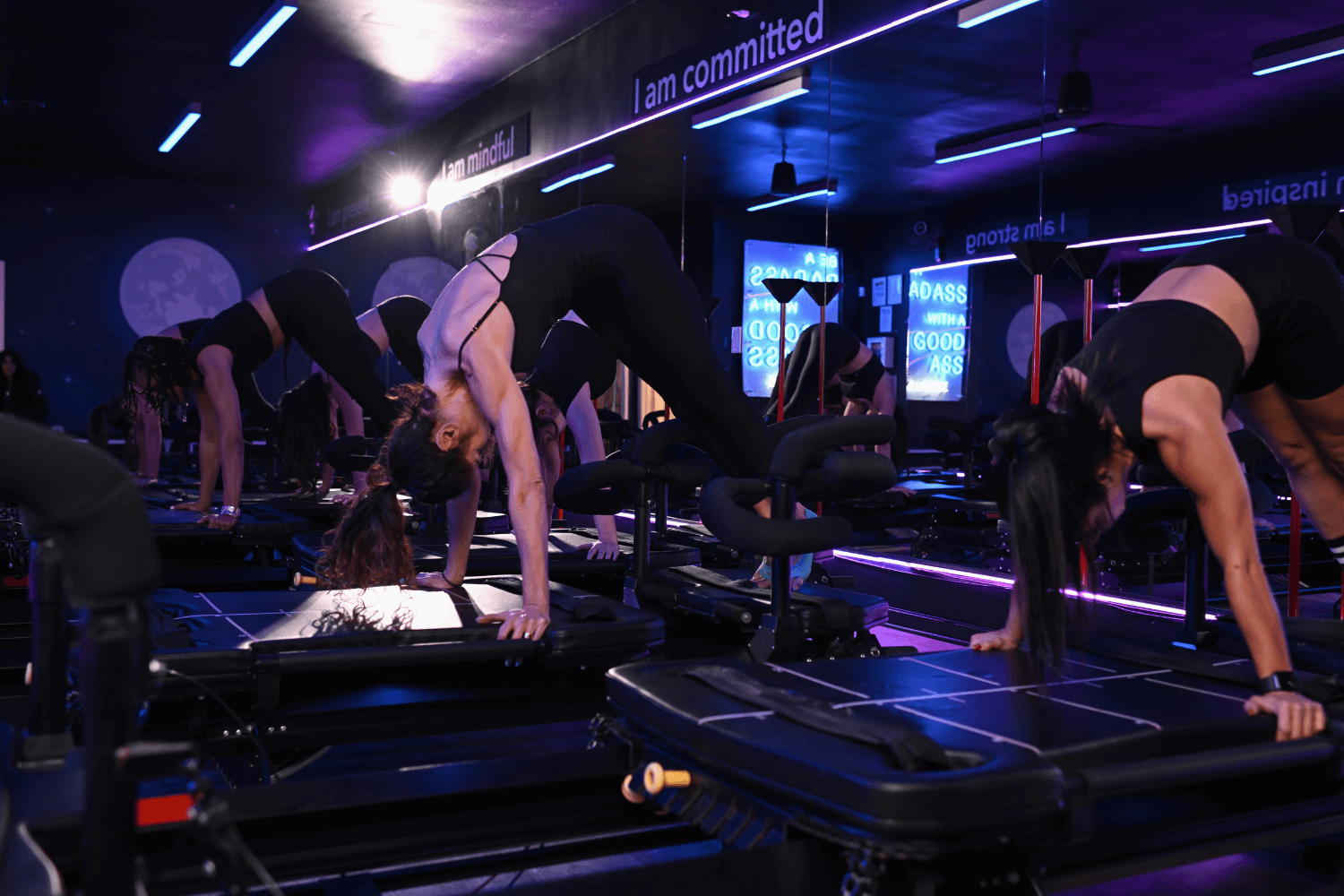
Months 7–9: Plateaus and Adjustments
In months seven to nine, it's common to hit plateaus. Your body has adapted to your routine, and progress may slow down. However, this is a valuable opportunity to assess your fitness journey and make adjustments.
Try new exercises and workout techniques to challenge your body. Changing your routine can reignite your progress and prevent boredom. Stay persistent, and you'll overcome these temporary setbacks.

Months 10–12: Refining and Pushing Limits
As you approach the one-year mark, you'll find yourself breaking through plateaus and setting new goals. Your workouts will improve, and you'll focus on refining your techniques. This phase is about pushing your limits and achieving new heights in your fitness journey.
Remember that everyone's timeline for progress is unique. Celebrate your achievements and continue striving for excellence. Your dedication will pay off in the long run.

Beyond One Year: Long-Term Maintenance
Reaching the one-year milestone in your fitness journey is a significant achievement, but the journey doesn't end there. Long-term maintenance is all about sustaining the progress you've made and continuing to prioritize your health and fitness. Here's a deeper look at what you can expect beyond the first year:
1. Periodic reassessment of goals: As you move forward, it's essential to reassess your fitness goals periodically. Your objectives may change over time, whether you want to build more muscle, improve flexibility, or enhance cardiovascular endurance. By setting new goals and adjusting your workout routine, you'll continue challenging yourself and staying engaged in your fitness journey.
2. Consistency is key: One of the most crucial aspects of long-term maintenance is consistency. By now, exercise should be a habitual part of your daily or weekly routine. Staying consistent with your workouts will help you maintain the progress you've achieved and prevent backsliding. Even during busy or challenging times, find ways to prioritize physical activity.

3. Listening to your body's needs: As your fitness journey evolves, you'll become more attuned to your body's signals. Pay attention to signs of fatigue, overtraining, or injury. It's essential to balance pushing your limits and giving your body the rest it needs. Incorporate active recovery days and prioritize proper nutrition and sleep to support your long-term health.
4. Variety and cross-training: To prevent monotony and keep your workouts fresh, consider incorporating variety into your fitness routine. Cross-training, which involves participating in different types of exercises, can help you stay engaged and prevent overuse injuries. Experiment with activities like Lagree , swimming, yoga, hiking, or group fitness classes to keep things interesting.
5. Looking for professional guidance: Beyond one year, you might benefit from seeking guidance from fitness professionals such as personal trainers or nutritionists. They can help you fine-tune your approach, provide expert advice, and help you overcome specific challenges or plateaus you encounter along the way. Make sure to always work out with certified trainers .

How to Stay Motivated
Maintaining motivation throughout your fitness journey can be challenging but essential for long-term success. Here are some practical strategies to help you stay motivated:
1. Set realistic and specific goals: Clear, achievable goals provide a sense of purpose and direction. Break down your long-term objectives into smaller, measurable milestones. Celebrate each achievement along the way to stay motivated.
2. Track your progress: Keep a fitness journal or use a mobile app to track your workouts, nutrition, and other relevant data. Seeing your progress on paper or a screen can be incredibly motivating.
3. Find a workout buddy or join the Lagree community: Joining the Lagree community offers access to unique and motivating workouts guided by expert trainers, fostering a sense of camaraderie and consistency among members. This community not only enhances physical fitness but also promotes holistic well-being, making it an excellent choice for individuals of all fitness levels.
4. Mix it up: Variety is the spice of life, and the same goes for your workouts. Try new exercises, classes, or outdoor activities to keep your routine interesting. Novelty can reignite your passion for fitness.

5. Reward yourself: Treat yourself when you reach significant milestones. These rewards can be anything from a relaxing massage to a new workout gear. It's a tangible way to acknowledge your hard work and dedication.
6. Visualize your success: Spend time visualizing your future self and the benefits of achieving your fitness goals. This mental imagery can help you stay focused and motivated, especially during challenging times.
7. Create a routine: Establish a consistent workout schedule that becomes a habit. Once exercise is integrated into your daily life, it becomes less of a chore and more of a lifestyle .
8. Look for inspiration: Follow fitness influencers, read success stories, or watch motivational videos. Inspiration from others who have achieved their fitness goals can reignite your determination.
9. Track non-physical benefits: Remember that exercise isn't just about physical appearance. Think about the mental and emotional benefits , such as reduced stress, increased energy, and improved mood.

In the quest for fitness results, patience and consistency are your allies. Understanding the timeline for workout results allows you to manage your expectations and stay committed to your goals. Whether you're in your first month or beyond a year, remember that the journey is as important as the destination. Embrace the challenges, celebrate your victories, and keep pushing your limits — the real results are worth the effort. Sign up for your first class, and see you on the Megaformer !
Other PPLA Articles

The Resistance Revolution: Megaformer Springs vs. Weights
Combine resistance training results with cardiorespiratory endurance.

Is Lagree Strength Training? Yes, and Here’s Why!

IWD and Lagree: Celebrating Achievements
First timer see our awesome deals., app & social.
- Skip to primary navigation
- Skip to main content
- Skip to primary sidebar
The Online Home for Strength Sports
The Best Beginner Workout Plan To Start Your Fitness Journey
This is your first step into a larger, fitter world..
Best Beginner Workout Plan
- How To Progress
- Sets and Reps
- Workout Splits
Nothing worth having comes easy. This is as true in your career as it is in the gym — the latter of which can be extremely daunting if you’ve never been before.
If you’re new to exercise, hitting the gym can easily become overwhelming. After all, there are dozens if not hundreds of machines, free weights , cardio equipment , stretching tools, and more scattered around. Where do you even start?

A bit of planning and structure can make fitness less frightening and more fun. Instead of worrying over what you should be doing, how much of it, or for how long, a good beginner workout plan removes the guesswork and lets you focus on what matters; putting in the actual work. This guide has everything you need to get started, no matter your goal.
Editor’s Note: The content on BarBend is meant to be informative in nature, but it should not be taken as medical advice . When starting a new training regimen and/or diet, it is always a good idea to consult with a trusted medical professional. We are not a medical resource. The opinions and articles on this site are not intended for use as diagnosis, prevention, and/or treatment of health problems. They are not substitutes for consulting a qualified medical professional.
All fitness enthusiasts, from recreational gym rats to full-time athletes, follow some sort of pre-programmed structure. Periodization , as it’s known, refers to the organizational design of a workout plan that ensures you’re moving toward your goals, not away from them.
You don’t need to commit to exercise every day to see results, especially as a beginner. In fact, a good three-day plan is more than enough.
You can perform these three workouts however you like over the course of a week, but remember to include at least one day of rest between workouts . For example, a common schedule is to exercise on Monday, Wednesday, and Friday.
The Workout
You may have very specific goals in mind when deciding to get active, ranging from losing weight to regaining some day-to-day mobility or building muscle .
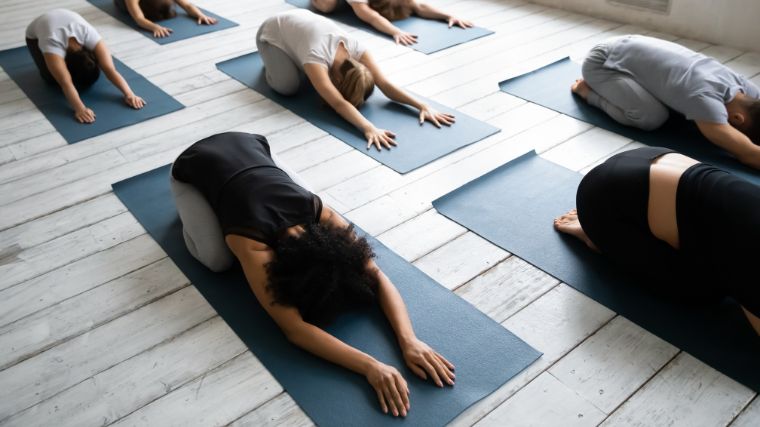
[Read More: The Best Full-Body Bodybuilding Workout for Beginner to Advanced Lifters ]
Regardless, your best bet as a beginner is to start general, developing several athletic qualities like flexibility and strength, and then get specific later on. As such, this plan is designed to improve multiple dimensions of fitness at once.
Day 1
- 5 minute cardio warm-up
- Goblet Box Squat : 3 x 8
- Assisted Pull-Up : 2 x 10
- Incline Push-Up : 2 x 10
- Plank : 3 x 15 seconds
- 15-20 minutes of low-intensity cardio
- Kettlebell Swing : 3 x 15
- Stretching (3 rounds, 30 seconds each)
- Cat-camel stretch
- Pigeon pose
- Child’s pose
- Kneeling hip flexor stretch
- Butterfly stretch
- 5-minute cardio warm-up
- Dumbbell Row : 3 x 8
- Barbell Bench Press : 3 x 8
- Romanian Deadlift : 2 x 12
- Box Jump : 3 x 5
How To Progress Your Workout
Here’s the deal: As a beginner, you’re going to make progress faster than you might expect (as long as you’re putting in real effort). However, that doesn’t mean that gains flow freely to ever. As you become more acclimated to the demands of exercise, you’ll need to get crafty about your workouts and incrementally increase the difficulty over time. ( 1 )
This is known as progressive overload , and it needs to be the backbone of your workout plan long-term. Here are three simple ways to progress your workouts, organized by general priority:
This one applies solely to resistance training, but is the most straightforward method of employing progressive overload. If you’re performing an exercise that you can load with additional weight, such as a barbell exercise , you should strive to work with slightly heavier weights over time.
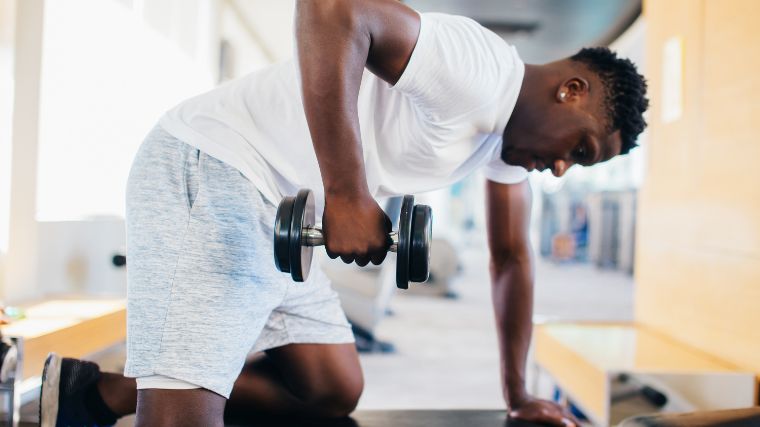
[Read More: The 15 Best Shoulder Exercises For Building Muscle ]
This doesn’t mean you need to slap on 20 extra pounds every week, but you should aim to make small jumps in resistance over time.
Add Sets or Reps
If you can’t increase the amount of weight you’re lifting, your next best option is to beef up the amount of work you perform. That is, your “ training volume .” The most practical way to do this is to increase the number of repetitions you perform during a set of a given exercise, or add another set altogether.
Reduce Your Rest Times
Another way to amp up the difficulty of your workouts and drive progress is to increase the density of your sessions. Which is to say adjusting the ratio of work to rest you perform.
[Read More: 5 At-Home Workouts for Strength, Muscle Growth, Power, and More ]
Almost all physical activity requires brief rest intervals so you can recover for another bout of effort. Over time and as your fitness improves, you should be able to slowly chip away at these “down” periods. Resting for one and a half minutes instead of two minutes shortens your session without removing any of the actual work.
Change Exercises
Generally speaking, being a chronic “exercise hopper” is a bad thing. Adapting to any physical stressor takes time, and if you don’t give an exercise in your workout plan a fair shot, you might never find out if it’s productive for you.
That said, some scientific research has demonstrated the power of novelty when it comes to exercise. Put simply, rotating through a series of similar movements that work the same muscles may be more effective at creating progress than sticking with the same exercises for months on end. ( 2 )

[Read More: The Best Online Workout Programs For Coaching, Cardio, Value, And More ]
This doesn’t mean that you should change your workout plan on a weekly (or even monthly, necessarily) basis. However, if you’re a few months into your current routine and feel like progress is slowing down, it may be time to change up what you’re doing.
Sets and Reps Explained
Almost all physical exercise that isn’t cardiovascular endurance training is organized by sets and reps . A “rep” is a single repetition of a given exercise; think curling a dumbbell up and lowering it back down again. A “set” is a cluster of repetitions performed back-to-back with no rest in-between.
The set-rep notation you’ll see most commonly is “[sets] x [reps]”. For example:
- Biceps Curl : 3 x 8
This prescription would instruct you to perform eight biceps curls back-to-back, rest for a minute or two, and then repeat it twice more.
Workout Splits Explained
Workout splits have nothing to do with ballet, yoga, or gymnastics — unless you’re training for flexibility, of course! A “split” is a colloquial term for the general organization behind a workout program .
In real-world terms, splits define the number of days you hit the gym and what you do on those days . For example, a three-day workout split involves exercising thrice per week. People will also commonly design splits around training specific muscle groups (prevalent in bodybuilding) or anatomical functions (think pushing and pulling).

[Read More: Best Treadmills For Streaming, Folding, Running, And More ]
There are also full-body splits, which entail performing a variety of exercises for your entire body multiple times throughout the week. These principles apply to all forms of physical activity: You can have a workout split that contains cardio, stretching, sport-specific practices, and so on. Splits are simply your schedule.
Beginner Workout Tips
When it comes to separating an average workout from an exceptional one, the devil’s in the details. Getting yourself into the gym or off the couch is half the battle, though. Once you’ve committed to taking the plunge, put these simple tips into practice to enhance your results:
Start Slowly
The fastest runners in the world didn’t start their training with sprints; they started with jogs. To be successful in any athletic endeavor, especially if you’re new to physical activity, you’ll need to pace yourself. After all, you have to crawl before you can walk.
[Read More: The 15 Best Home Gym Machines ]
In real-world terms, this looks like selecting very easy weights during your first few sessions. Don’t be afraid to take ample rest time between sets, or ask a staff member at the gym to advise you on proper technique rather than trying to wing it on a complicated exercise.
Dress Appropriately
The saying “look good, feel good” absolutely applies to the gym. Not only will appropriate gymwear help wick sweat and cool your body, you’re more likely to put in a higher amount of effort during your workouts if you’re rocking a killer outfit.
Bring Music (Or a Friend)
As it turns out, your favorite tunes are good for more than jamming out on the drive to the gym. There’s some interesting science behind auditory stimulation and exercise performance.

[Read More: The Gymgoer’s Guide to Whey Protein ]
Namely, some data has shown that listening to music during exercise can improve pain tolerance, increase motivation , and even boost your strength in some cases. ( 3 )( 4 ) A similar idea applies to working out with a partner. You’ll have a reliable and trusted spotter to help you stay safe while you train, and you’ll also have someone to trade motivation with on your journey.
Don’t Aim for Perfect
One of the worst things you can do as a beginner on their fitness journey is to obsess over “optimal.” In almost all cases, simply making it into the gym at all is a victory, and will get you closer to your goals than not going at all out of fear of not doing things properly.
When you’re starting out, don’t be afraid to head into the gym and do things wrong . You won’t master a new exercise during your first session, and that’s okay. Over time, many slightly-less-than-perfect sessions will get you much further than a few “perfect” workouts.
If you’re still wondering about working out, we’ve got you covered. Check out these common questions, answered for your convenience:
What is a good beginner workout routine?
Realistically speaking, a good beginner workout routine is one that you find enjoyable and can stick to. The perfect workout plan doesn’t exist, and forcing yourself to partake in a type of activity you detest isn’t sustainable.
That said, most beginners should focus on exercising between two and four days per week, performing a combination of different activities including strength training , cardiovascular exercise, and stretching or balance-focused drills.
How many days should a beginner workout be?
One of the best parts of being a beginner on your fitness journey is that you can get a lot out of a little. As in, you need very little physical training to make substantial progress as long as you put in real effort.
Most beginner workout routines consist of two to four days of planned activity. That three-day sweet spot ensures that you’re moving regularly, but also have ample time to rest and recover as you adjust to the demands of exercise.
What are the benefits of working out?
The list of benefits of working out is almost endless. Physical activity is demonstrably and consistently associated with improved health markers like mood, blood pressure, heart rate, body composition , joint stability, and much, much more. ( 5 ) Exercise is, indisputably, the most effective non-medical care you can provide to your body throughout life.
More Training Content
- The Ultimate Guide to Building Your Own Bodybuilding Workout Plan
- How to Balance Running and Strength Training, No Matter Your Goals
- Build Muscle Anywhere With These At-Home Workouts
- Williams, T. D., Tolusso, D. V., Fedewa, M. V., & Esco, M. R. (2017). Comparison of Periodized and Non-Periodized Resistance Training on Maximal Strength: A Meta-Analysis. Sports medicine (Auckland, N.Z.), 47(10), 2083–2100.
- Fonseca, R. M., Roschel, H., Tricoli, V., de Souza, E. O., Wilson, J. M., Laurentino, G. C., Aihara, A. Y., de Souza Leão, A. R., & Ugrinowitsch, C. (2014). Changes in exercises are more effective than in loading schemes to improve muscle strength. Journal of strength and conditioning research, 28(11), 3085–3092.
- Silva, N. R. D. S., Rizardi, F. G., Fujita, R. A., Villalba, M. M., & Gomes, M. M. (2021). Preferred Music Genre Benefits During Strength Tests: Increased Maximal Strength and Strength-Endurance and Reduced Perceived Exertion. Perceptual and motor skills, 128(1), 324–337.
- Thakare, A. E., Mehrotra, R., & Singh, A. (2017). Effect of music tempo on exercise performance and heart rate among young adults. International journal of physiology, pathophysiology and pharmacology, 9(2), 35–39.
- Ruegsegger, G. N., & Booth, F. W. (2018). Health Benefits of Exercise. Cold Spring Harbor perspectives in medicine, 8(7), a029694.
Featured Image: Jono Erasmus / Shutterstock
About Jake Dickson, NASM-CPT, USAW-L2
Jake is a graduate of the University of North Carolina at Wilmington with a B.S. in Exercise Science. He began his career as a weightlifting coach before transitioning into sports media to pursue his interest in journalism.
View All Articles
BarBend is an independent website. The views expressed on this site may come from individual contributors and do not necessarily reflect the view of BarBend or any other organization. BarBend is the Official Media Partner of USA Weightlifting.
- Weight Management
- Nutrition Facts
- Nutrition Basics
- Meal Delivery Services
- Fitness Gear
- Apparel & Accessories
- Recipe Nutrition Calculator
- Weight Loss Calorie Goal
- BMI Calculator
- Body Fat Percentage Calculator
- Calories Burned by Activity
- Daily Calories Burned
- Pace Calculator
- Editorial Process
- Meet Our Review Board
How to Use a Fitness Journal for Goal Tracking
Rachel MacPherson is a health writer, certified personal trainer, certified strength and conditioning specialist, and exercise nutrition coach based in Halifax.
:max_bytes(150000):strip_icc():format(webp)/Rachel_MacPherson_Contributer1-8f6faa1ddb5a4374956d56a1734d6857.jpg)
Kristin McGee is a certified personal trainer and currently teaches yoga and meditation for Peloton. She is also certified in Pilates by the National Association of Sports Medicine.
:max_bytes(150000):strip_icc():format(webp)/Kristin-McGee-1000-07cf951d98d3450dbba8d6a2e3bda2d6.jpg)
Lordn / Getty Images
- How to Define Goals
- Journaling Prompts
- Choosing the Right Journal
- What to Track
- Tips for Tracking
If you’re like most people, life can feel so busy that fitting in time to exercise is more wish list material than reality. Between work, family life, and other mounting responsibilities, fitness goals often get lost in the shuffle of daily to-dos.
If this sounds familiar, a fitness journal can be a powerful ally. The simple act of scheduling and tracking your fitness goals, progress, and commitments is an effective tool that serves as a roadmap to your health and wellness aspirations. Recording your workouts, meals, lifestyle habits (such as the ever-elusive sleep), and even your feelings offers a unique blend of accountability, reflection, and motivation, turning your aspirations into concrete targets.
By tracking your progress in a fitness journal , you’ll gain invaluable insights into your habits, helping you understand what works and what doesn't during your fitness journey. Whether you're a seasoned gym-goer, fitness newbie, or returning to activity after a break, using a fitness journal will help you continuously adapt and improve, keeping you aligned with your overall goals.
Using a journal goes beyond just logging exercises, though. It's a place to celebrate small victories, adjust strategies, and set realistic, achievable goals. Here, we'll explore how a fitness journal can help guide and motivate you along your health and fitness journey.
How to Define Your Fitness Goals Using the S.M.A.R.T. Framework
Creating clear and defined fitness goals is the supporting structure of a successful health and wellness journey. A study published in the American Journal of Health Promotion emphasizes the importance of goal setting in fitness routines, showing that specific and challenging goals lead to higher performance outcomes compared to easy or no goals. To use this strategy for yourself, try implementing the S.M.A.R.T. goal-setting framework.
- Specific : Your goals should be clear and precise so you know exactly what you're working toward. For instance, instead of a vague goal like "get fit," be more specific, such as "do 10 pushups in a row" or "practice yoga for 30 minutes five days a week."
- Measurable : Include precise amounts, dates, or milestones so you can measure your progress. A measurable goal could be, "I want to gain five pounds of muscle in three months."
- Achievable : While it's good to be ambitious, your goal should be realistically attainable. Setting an achievable goal might mean starting with "I will increase my steps by 500 a day" rather than "I will run a marathon in a month."
- Relevant : Ensure your goals are relevant and important to you. This is where your motivation lies. A relevant goal might be, "I want to build strength to carry my kids" or "I want to improve my endurance for pickleball games."
- Time-bound : Every goal needs a deadline. This helps you stay focused and creates a sense of urgency. An example might be, "I want to increase my deadlift weight by 50 pounds within six months."
Journaling Prompts for Goal Reflection
Reflecting on your goals in your fitness journal can provide clarity and strengthen your commitment. Consider these prompts, especially if you are struggling to know what to write about.
- "Why is this goal important to me?" Understanding the personal significance of your goal can boost your motivation, especially during challenging times. It also can serve to keep you on task.
- "What challenges might I face?" Anticipating potential obstacles allows you to plan for them. Recognizing these challenges in advance can be empowering and keep you from getting discouraged when they pop up.
- "How will I celebrate my success?" Celebrating milestones, no matter how small, is crucial. It reinforces positive behavior and keeps you motivated. Write down how you might celebrate when you reach your goal.
By integrating the S.M.A.R.T. framework into your fitness journal, you set a foundation for clear, attainable, and meaningful fitness goals. Your journal becomes a valuable record of what you've done and serves as a strategic plan for what you hope to accomplish. It also encourages a deeper connection between your daily actions and what you want to achieve in the long term.
Choosing the Right Fitness Journal for You Based on Your Goals
Choosing the right fitness journal is a crucial step in your health and wellness journey. The type of journal you select should align with your goals and lifestyle. Generally, fitness journals fall into three categories. These include physical notebooks, digital apps, and printable templates. Each comes with its unique advantages. Here's a closer look at each.
Physical Notebooks
Physical notebooks are ideal for those who prefer pen and paper and offer a tangible, personalized experience. They're great for those who enjoy writing, creating, doodling, and adding your own flare. In-hand notebooks are also ideal for those who want a physical record of their journey or for those who find apps and on-screen trackers are easily forgotten.
Digital Apps
Perfect for techies or anyone who easily forgets or misplaces physical notebooks, digital apps allow for easy tracking and automated calculations like calorie counts. Plus, they often include additional features like reminders and community support. Digital apps are often subscription-based, but several free options exist.
Printable Templates
Printable templates offer a blend of structure and flexibility. You can print and customize them according to your needs, which makes them a good choice if you're looking for something between a physical notebook and a digital app.
Another benefit of printables is that if you find you’re not enjoying a certain template, you can quickly and easily create or find a new one. Look for printables that you can re-size to fit your ideal notebook or binder—especially if you want your fitness journal to be portable.
Key Sections to Track in Your Fitness Journal
Selecting a fitness journal that resonates with you and includes key sections can significantly enhance your ability to track and achieve your fitness goals . Using your fitness journal as more than just a tracker helps provide structure and insight throughout your fitness journey.
Regardless of the type of journal you choose, it should have sections that cater to the various aspects of your fitness journey. Here are some things to consider:
Record the date, exercise type, sets, reps, weight, and intensity of your workouts. Adding notes about how each session felt can provide insights into your performance and progress. If you hope to build muscle , monitoring how much volume you are doing each week is vital for making gains. For strength training, tracking how much more weight you are able to lift over time keeps you informed on whether your program is working or not.
Nutrition plays a pivotal role in whether you make the most of your workouts and see progress. Eating well not only helps you recover from training and boosts muscle growth or facilitates fat loss, but it also provides you with the energy you need for training. Note your food intake, calorie count, macros, and hydration levels. This information is crucial for understanding the relationship between your diet and fitness results.
You can also use a fitness journal to track measurements, body composition changes , and fitness benchmarks like running times or lifting weights. This section helps you visualize your physical changes over time and keeps you informed on the progress you're making. This also helps you determine whether the strategies and techniques you are using are working for you or not.
Lifestyle Habits
Track your sleep quality, stress levels, and mood. These factors significantly impact your fitness and overall health and can reveal how your workouts are affected by other lifestyle habits. Leave space for personal notes, reflections on how you’re feeling, adjustments to your routine, and motivational quotes.
Reflections and Well-Being
This section is about connecting with yourself on a deeper level, understanding your motivations, and maintaining mental and emotional balance. It’s natural—and even expected—for motivation to wane over time as the novelty of your routine wears off. Research shows that finding and cultivating internal motivation is what will keep you working toward your goals even when you might not feel like it.
Verywell Fit / Sarah Felbin
Making Your Journal Work for You
Making the most of using a journal means ensuring you are consistent and develop some personal attachment to the process. Here are some tips on how to make journaling work for you:
Be Consistent
To truly benefit from a fitness journal, it's essential to make it a consistent part of your routine. Consistency is the backbone of any fitness journey, and this extends to journaling as well. Commit to a regular journaling schedule, even if it's just five minutes a day.
Try pairing it with another activity, such as drinking coffee or getting into bed, for an even greater chance of success. Consistent reflection keeps you on track and helps develop a deeper understanding of what's working and what might need to change.
Make it Personal
Personalizing your journal can transform it from a rather dull and analytical tracking tool to an engaging and rewarding part of your fitness experience. Use colorful pens, stickers, or even doodles and quotes to bring a bit of fun and creativity to the process. This personal touch can boost that all-important internal motivation and increase your attachment and commitment to maintaining your journal.
Celebrate Yourself
Celebrating small wins is crucial for feeling like you are making progress, but many people skip this step, focusing on what's next. Instead, set mini-goals within your larger objectives and reward yourself when you achieve them—even if it's just by telling your friends and allowing them to cheer you on.
Celebrations act as positive reinforcement and boost your overall motivation and commitment. Whether it's a relaxation day or buying a killer pair of leggings you've been coveting, these rewards acknowledge your hard work and progress.
Adapt as You Go
Don't hesitate to adapt your journal—and your goals—as you progress. Your needs, abilities, and circumstances can change over time, and your journal should reflect this. Modify your goals, routines, and even your journaling methods based on the feedback and insights you gain, such as how you feel about your progress and whether you're still enjoying your training routine.
Flexibility is vital to maintaining a relevant and effective fitness plan that you truly love. Remember, your fitness journal is an ever-evolving tool designed to grow with you on your journey to better health and wellness.
Bottom Line
A fitness journal is much more than a way to track your training metrics—it's a tool for setting realistic goals, understanding your unique needs, and adapting your fitness plan as you progress. Remember, the path to fitness is never a straight one, and you'll likely experience dips in motivation, which is perfectly normal.
Each entry in your journal is a step toward your goals and a symbol of your commitment to yourself and your health. Don't be afraid to switch up whatever isn't working for you and to make tweaks along the way.
Bailey RR. Goal setting and action planning for health behavior change . American Journal of Lifestyle Medicine . 2019;13(6):615-618. doi:10.1177%2F1559827617729634
Yoshida R, Sato S, Kasahara K, et al. Greater effects by performing a small number of eccentric contractions daily than a larger number of them once a week . Scandinavian Med Sci Sports . 2022;32(11):1602-1614. doi:10.1111/sms.14220
van der Weiden A, Benjamins J, Gillebaart M, Ybema JF, de Ridder D. How to form good habits? A longitudinal field study on the role of self-control in habit formation . Front Psychol . 2020;11:560. doi:10.3389/fpsyg.2020.00560
By Rachel MacPherson, BA, CPT Rachel MacPherson is a health writer, certified personal trainer, and exercise nutrition coach based in Halifax.
How to Start a Fitness Journal: Tips, Templates, and Prompts
- April 14, 2023
Home » Day One Blog » How to Start a Fitness Journal: Tips, Templates, and Prompts
Keeping a fitness journal is a great way to stay motivated, track your progress, and achieve your fitness goals. By recording your workouts, meals, and other relevant information, you can identify patterns, track your progress over time, and adjust your approach to optimize your results. A fitness journal can also serve as a source of inspiration and accountability, helping you stay committed to your goals even when the going gets tough. Whether you’re aiming to lose weight, build muscle, or simply maintain a healthy lifestyle, a fitness journal can be an invaluable tool for achieving your goals and feeling your best.
But what exactly is a fitness journal, and how can it help you on your fitness journey? In this post, we’ll explore the benefits of fitness journaling and how it can help you achieve your goals. We’ll offer ideas for what to include in your fitness journal, a fitness journal template to make tracking easy, and prompts to help you reflect on your progress and adjust your approach. Whether you’re just starting out or looking to take your fitness to the next level, this post is designed to help you make the most out of your fitness journal.
What is a Fitness Journal?
A fitness journal is a type of journal used to record and reflect on your fitness journey. This type of journal offers a place where you can write down the details of your workouts, including the exercises, sets, reps, and weights that you lifted. A fitness journal is also used to note any associated thoughts or emotions during or after a workout.
The goal of keeping a fitness journal is to stay motivated, track your progress, and achieve your fitness goals. By recording your workouts, meals, and other relevant information, you can identify patterns, track your progress over time, and adjust your approach to optimize your results. Additionally, a fitness journal can serve as a source of inspiration and accountability, helping you stay committed to your goals even when the going gets tough. Whether you’re aiming to lose weight, build muscle, or simply maintain a healthy lifestyle, a fitness journal can be an invaluable tool for achieving your goals and feeling your best.

Fitness Journal vs Fitness Tracker: What’s the Difference?
Keeping a fitness journal and using a fitness tracker are two different approaches to monitoring your fitness journey.
A fitness journal is a written record of your workouts, including the exercises you did, the number of sets and reps, the weight you lifted, and any other notes or observations about your physical and emotional state during the workout. It’s a way to track your progress over time, identify areas that need improvement, and set goals for future workouts. A fitness journal allows you to reflect on your workout experience and gain insights into your progress that a fitness tracker may not provide.
On the other hand, a fitness tracke r is an electronic device or app that uses sensors to track your physical activity and record data such as the number of steps taken, calories burned, heart rate, and distance traveled. Fitness trackers provide real-time data and allow you to monitor your progress throughout the day, as well as set and track goals. They can be helpful in motivating you to stay active and achieve your fitness goals by providing instant feedback on your progress.
While both approaches have their benefits, a fitness journal can provide a more comprehensive and personalized record of your fitness journey, while a fitness tracker can provide real-time feedback and motivation. Many people choose to integrate both approaches, adding fitness journal data into their fitness journal.

Why Keep a Fitness Journal? 8 Reasons
Keeping a fitness journal can be beneficial in several ways. Here are a few reasons why you might want to consider starting a fitness journal:
1. Keep yourself accountable.
A fitness journal can help keep you accountable to your goals by providing a tangible record of your progress and reminding you of your commitments. By holding yourself accountable to the commitments you make in your journal, you can build a sense of discipline and dedication to your fitness journey. In fact, journaling goals can increase your likelihood of success by 42%!
2. Log your workouts.
One of the primary benefits of keeping a fitness journal is being able to log your workouts. By recording your exercises, sets, reps, and weights, you can easily track your progress and see improvements over time. This can be especially helpful when trying to break through plateaus or when changing up your workout routine. Additionally, having a record of your workouts can help you stay consistent and focused, as you can look back and see how far you’ve come and what you’ve accomplished.
3. Stay motivated.
Staying motivated is crucial to maintaining a consistent fitness routine and achieving your goals. Keeping a fitness journal can be a powerful tool for staying motivated, as it allows you to see your progress over time and celebrate your successes. When you see improvements in your strength, endurance, or flexibility, it can give you a sense of accomplishment and inspire you to continue pushing yourself. By staying motivated, you can continue to make progress towards your fitness goals and build a sustainable and fulfilling fitness routine.
4. Identify patterns.
A fitness journal can help you identify patterns in your workouts and eating habits, such as which exercises are most effective for you, what times of day you have the most energy, or which foods make you feel the best. Keeping a fitness journal can also help you spot patterns about when you are more likely to skip a workout or make unhealthy choices, and take action to avoid these pitfalls in the future.
5. Track your progress.
Tracking your progress is an essential aspect of keeping a fitness journal, as it allows you to see the results of your hard work and stay motivated. By recording your workout times, weights lifted, and other metrics, you can monitor your progress towards your fitness goals and adjust your routine as needed to continue challenging yourself. Seeing progress over time can also help you stay motivated on days when you feel less inspired or when you hit a plateau.
6. Adjust your approach.
Tracking your workouts, nutrition, and goals in a fitness journal can help you identify patterns and trends in your progress, allowing you to adjust your approach and optimize your results. By recording what works and what doesn’t work for you, you can make informed decisions about how to adjust your routine to better meet your needs and goals. For example, if you notice that you consistently struggle to fit in workouts on certain days of the week, you can adjust your schedule to make those days your rest days instead. If you notice that certain exercises or types of workouts leave you feeling particularly energized, you can prioritize those in your routine. By being flexible and willing to adjust your approach, you can stay on track and achieve optimal results.
6. Set goals.
A fitness journal can help you set and achieve specific fitness goals by breaking them down into smaller, measurable steps and tracking your progress towards each one. With a fitness journal, you can set specific, achievable goals and break them down into smaller, measurable steps that you can track over time. For example, if your goal is to run a 5k, you can set a series of smaller goals, such as running for 10 minutes without stopping, then 20 minutes, and so on, until you reach your ultimate goal. By tracking your progress towards each goal in your fitness journal, you can stay motivated and celebrate each milestone along the way.
7. Deepen self-awareness.
Deepening self-awareness is an important benefit of keeping a fitness journal. By regularly reflecting on your thoughts, emotions, and behaviors related to your fitness journey, you can gain insight into your habits, tendencies, and motivations. This can help you identify patterns, both positive and negative, in your approach to fitness and make more informed decisions about your health and wellness. For example, if you notice that you consistently feel stressed or anxious before a workout, you can explore strategies to reduce your stress levels and improve your mindset. By becoming more self-aware of your needs and preferences, you can create a more personalized and fulfilling fitness routine that supports your overall well-being.
8. Go deeper than stats.
While a fitness tracker can provide lots of data related to your workouts, performance, and health, it doesn’t provide insights into the emotional and mental aspects of your fitness journey. Keeping a fitness journal allows you to go deeper than just the stats and record how you feel during and after your workouts. Fitness journals provide an opportunity to document your progress, set goals, and reflect on your fitness journey holistically. A fitness journal can help you identify patterns, celebrate successes, and recognize areas that need improvement. It can also be a therapeutic tool for managing stress and anxiety, and can help you stay motivated and focused on achieving your fitness goals in a sustainable way.

Fitness Journal Ideas & Tips
If you’re new to fitness journaling, you might need a few ideas for how to get started. Here are ten ideas for creating and maintaining a fitness journal:
1. Keep your fitness journal in an easy-to-access location.
Keep your fitness journal somewhere that is easily accessible and visible to you, such as in your gym bag. Having your fitness journal easily accessible can also serve as a reminder to track your progress and keep up with your fitness goals. Using a journal app like Day One can help you keep your journal on your phone, so you can update it on the go and never miss recording a workout.
2. Write in your fitness journal immediately after your workout.
Try to write in your fitness journal as soon as possible after your workout while the details are fresh in your mind. This will ensure that you record accurate information about your workout, including the exercises you did, the number of sets and reps, and any modifications or challenges you faced. Writing immediately after your workout also helps you reflect on your performance, track your progress, and set goals for future workouts.
3. Write your entries in the present tense.
Write about your workouts as if you are currently experiencing them. This can help you to remember the details more clearly. Writing in the present tense can also help you stay engaged in the moment and focus on your form, breathing, and overall experience during the workout. This can also make your fitness journal more exciting to read, as it can feel like you’re reliving the workout each time you review your journal.
Here are some examples of fitness journaling in the present tense:
- “I am currently on my second set of squats, feeling my glutes and quads engage with each rep.”
- “As I inhale, I feel my chest expand and my shoulders relax. With each exhale, I focus on pushing through the resistance of the weight.”
- “My heart rate is increasing as I pick up the pace on the treadmill. The sweat on my forehead and the sound of my breath remind me that I am pushing myself towards my goals.”
- “My muscles are burning as I hold the plank position, but I am determined to keep my form strong and hold it for another 10 seconds.”
- “As I stretch my hamstrings, I feel the tension release, and I take a moment to appreciate the work I put in during my workout.”
4. Include specific details.
Record the details of your workout, such as the exercises you did, the number of reps and sets, the weight you lifted, and the duration of your workout. Adding specific details to your fitness journal not only helps you track your progress but also provides a reference point for future workouts. You can use this information to challenge yourself by increasing the weight or the number of reps and sets you perform. Be sure to note how you felt during the workout, such as any discomfort or pain, as this can help you identify areas that need improvement.
5. Note your physical and emotional state.
Include any physical sensations or emotions you experienced during your workout. This can help you to identify any areas of improvement or any patterns in your performance. Noting your physical and emotional state during your workout provides insight into your overall wellbeing and can help you understand the factors that affect your performance. For example, if you consistently feel fatigued during your workouts, it may be a sign that you need to adjust your sleep or nutrition habits. On the other hand, if you feel energized and motivated, you can replicate those conditions for future workouts. Being mindful of your physical and emotional state can also help you recognize when you need to take a break or adjust your workout routine to avoid injury or burnout.
6. Take a photo.
Taking a photo can be a great way to visually document your progress and see how far you’ve come in your fitness journey. Whether it’s a photo of your before and after transformation, a snapshot of a challenging workout, or a beautiful outdoor setting where you enjoy exercising, adding a photo to your fitness journal can bring your entries to life and make them more engaging to revisit. You can also use photos to track your progress in a specific area, such as yoga poses or weightlifting form, or to capture the emotions and experiences associated with your fitness journey. Adding a photo to your fitness journal can help you celebrate your successes, stay motivated, and build a sense of pride and accomplishment in your hard work.

7. Include motivational quotes or affirmations.
In addition to tracking physical progress, you can also use your fitness journal to write down motivational quotes or affirmations . Whether it’s a quote from a favorite athlete or fitness influencer, or a personal mantra that resonates with you, having a positive message to refer to can help you stay motivated and inspired. You can also use your fitness journal to write down your own affirmations or goals in a positive, present-tense format, such as “I am strong and capable” or “I am committed to my fitness journey.”
8. Keep track of progress.
Record your progress over time, such as improvements in strength, endurance, and flexibility. This can help you to stay motivated and focused on your fitness goals. Tracking your progress is an essential part of keeping a fitness journal as it helps you monitor your improvements and celebrate your successes. Keeping track of your progress can also help you identify areas that need improvement and adjust your workouts accordingly. You can use your fitness journal to set measurable goals, such as lifting a certain weight or running a certain distance, and track your progress towards those goals over time.
9. Keep ideas for future workouts.
Switching up a fitness routine has benefits for both physical and mental health. Use your fitness journal as a place to log ideas for future workouts, such as new exercises or workout routines to try. This can help you stay motivated and excited about your fitness journey, as well as challenge your body in new ways. Keeping a record of your ideas can also help you plan your workouts in advance and make the most out of your time at the gym or at home. Remember to be open to new ideas and don’t be afraid to step out of your comfort zone and try something new.
10. Take the time to review your fitness journal entries over time.
Reviewing your fitness journal entries over time is an essential part of keeping a fitness journal. Regularly revisiting your entries can help you identify patterns, track your progress, and celebrate your successes. It’s also an opportunity to reflect on your fitness journey and assess your goals and progress towards achieving them. Consider setting aside time each week or month to review your entries, and use this time to adjust your workout routine as needed or set new goals. Remember that the insights gained from reviewing your journal can help you stay motivated and focused on achieving your fitness goals.

Free Fitness Journal Templates
Having an example fitness journal template can be a great way to get started as you begin journaling. These example fitness journal templates offer several questions to help guide your entry and gives you a repeatable structure to follow, but don’t be afraid to make it your own.
By starting with a fitness journal template, you can develop a consistent journaling habit and explore different prompts and questions that can help you stay motivated and engaged in your fitness journey. You can always adjust the format, add or remove sections, and personalize the questions to fit your unique fitness goals and journey.
Guided Fitness Journal Template
This fitness journal template has sections to describe your workout, log the duration, add notes, and document goals.

Fitness Journal Template with Workout Tracker
This fitness journal template has includes a section to track different types of workouts, along with notes, and reflections.

20 Fitness Journal Prompts
As you record your fitness journey in your fitness journal, having a set of journal prompts can be helpful to guide your entries and give structure to your writing. These fitness journal prompts can help you explore different aspects of your fitness journey and gain deeper insights into your motivations, challenges, and successes.

Here are several fitness journal prompts to try:
- What motivated me to start my fitness journey?
- What are my specific fitness goals?
- What have been some of my favorite exercises or workouts? Why?
- What workouts do I not enjoy? Why?
- How do I usually feel during and after my workouts, both physically and emotionally?
- What have been my biggest challenges in my fitness journey so far?
- What motivates me to push through a tough workout, and how can I tap into that motivation more often?
- How have I progressed in my strength, endurance, and flexibility since I started my fitness journey?
- How do I plan to challenge myself in my next workout?
- What is my self-talk like during my workouts? How does it affect my performance?
- How do my workouts impact my stress levels?
- How has my fitness journey impacted other areas of my life, such as my mental health, relationships, or career?
- What role does rest and recovery play in my fitness journey, and how do I prioritize it?
- What are the best ways for me to maintain my fitness routine while traveling or during busy periods of my life?
- How do I adjust my workout routine to accommodate changes in my schedule or lifestyle?
- How do I incorporate mindfulness, meditation, or relaxing into my recovery practices?
- What are some non-physical benefits I have noticed from my fitness journey, such as improved mood or better sleep?
- What is my favorite post-workout snack or meal, and how does it fuel my body?
- How do I measure progress beyond just the numbers, such as feeling more confident or energized throughout the day?
- How can I celebrate my fitness achievements and successes, no matter how small they may seem?
How to Use Day One as a Fitness Journal App
Using a fitness journal app can be a convenient way to track your workouts. Rather than using paper or a physical notebook, you record your fitness in an app installed on your mobile device or laptop.
The Day One app can be used as a fitness journal app. You can download Day One here for your iOS, Macbook, or Android device.
Here are a few ways to use Day One as a fitness journal app:
1. Create a separate journal for your fitness journal.
Day One allows you to create separate journals (a Premium feature). Having a separate journal for your fitness journal allows you to keep your fitness journal entries separate from your primary journal, or journals you keep for other purposes, like your gratitude journal , mood journal , or dream journal .

2. Use a fitness journal template.
Use a fitness journal template and open it in your Day One journal. You can also copy and paste the fitness journal template example entry into a new journal template that you can reuse every time you record a workout

3. Add tags to your fitness journal entries.
By adding relevant tags to your fitness journal entries, such as the type of workout, the focus area, or your emotional state, you can quickly and easily search for specific information when you need it. This can be especially helpful if you have a specific question or want to review your progress in a certain area. Additionally, tagging your entries can help you identify patterns and trends over time, such as which types of workouts or activities you enjoy the most or which days of the week you are most consistent with your routine.

4. Add a photo.
Take a selfie, document your form and technique during exercises, or capture the equipment and settings where you did the workout.

6. Look at your fitness frequency with Calendar View.
Looking at your fitness frequency with Calendar view can help you identify any gaps or inconsistencies in your workout routine. By visually tracking your workouts over time, you can see if you are consistently meeting your fitness goals or if you need to make adjustments to your schedule or approach. Additionally, Calendar view can help you celebrate your successes and see how far you’ve come in your fitness journey. By using Day One’s Calendar view in conjunction with your fitness journal entries, you can gain a comprehensive understanding of your progress and use this information to continue improving and achieving your fitness goals.
7. Add fitness tracker integrations to your Day One journal with IFTTT.
Day One integrates with Apple Health for step counts and “Mindful Minutes,” but you can also add more integrations with your fitness tracker devices into your Day One fitness journal.
Check out some of the workflows and Applets with IFTTT’s Day One Integration , including:
- Strava Rides and Runs saved to Day One
- Fitbit daily activity summary saved to Day One
Wrapping Up: Fitness Journaling for Achieving Your Fitness Goals
A fitness journal can be your ally to help you achieve your fitness goals. By tracking your workouts, progress, and reflections, you can gain valuable insights into your fitness journey and identify patterns and trends that can help you make informed decisions about your health and wellness. Reviewing your fitness journal regularly can also help you stay motivated and celebrate your successes along the way. By using your fitness journal as a reflective and goal-setting tool, you can create a personalized and effective fitness routine that supports your overall well-being. Happy journaling!
Start a Fitness Journal in the Day One Journal App
The Day One journaling app makes it easy to build and maintain a daily journaling habit, including keeping a fitness journal. Daily journaling writing prompts , reminders , and journaling streaks are designed to help keep you motivated and consistently journaling.
About the Author
Kristen Webb Wright is the author of three books on journaling, including The Transformation Year , a year-long series of daily journal prompts. With a passion for writing and self-reflection, Kristen uses her experience with journaling to help others discover the benefits of documenting their thoughts, feelings, and experiences. In her role at Day One, she helps to promote the power of journaling so people from all walks of life can experience the transformative power of journaling.

Share this:
Journal from here, there, everywhere..
Download the Day One journal app for free on iPhone, Android, iPad, Mac, and Apple Watch.

How Long Before You Start Seeing Results - Reflections From My Fitness Journey
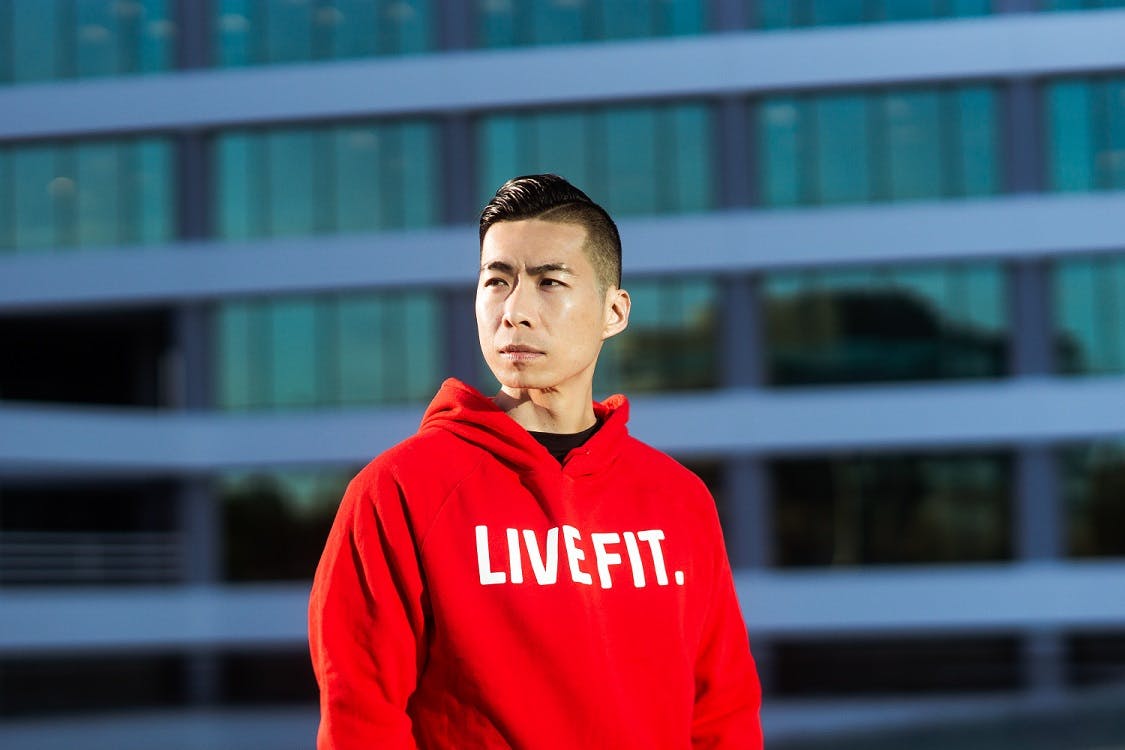
IntroductionFueling the Desire for Results: A Journey Towards Fitness
Embarking on a fitness journey is often fueled by an innate desire to witness tangible results. Whether it's shedding those stubborn pounds, sculpting a chiseled physique, or improving overall health and well-being, we all crave that sense of accomplishment that comes with reaching our goals. However, amidst this eagerness to transform ourselves, we must not forget the significance of patience and setting realistic expectations. Society bombards us with images of overnight success stories and quick-fix solutions. It's easy to get caught up in this allure, believing that instant gratification is within our reach. But in reality, genuine transformation is a marathon rather than a sprint. The Importance of PatienceIn our fast-paced world characterized by instant gratification and constant connectivity, patience has become an undervalued virtue. When it comes to fitness journeys, though, patience becomes the cornerstone upon which sustainable progress is built. It's crucial to understand that change happens gradually - like a seed sprouting into a mighty oak tree. Patience allows us to fully embrace the process rather than solely focusing on the outcome. It grants us the space needed for self-discovery and personal growth along the way. Just as Rome wasn't built in a day, your fitness journey won't yield immediate results either. Setting Realistic ExpectationsIn this era of airbrushed perfection showcased on social media platforms, it's easy to develop unrealistic expectations regarding our own fitness journeys. We may begin comparing ourselves to fabricated ideals or mirror images that do not reflect reality. However, what we must remember is that each individual's path towards wellness is unique and should be respected as such. There is no one-size-fits-all timeline for achieving results. Factors like genetics, starting point, and effort level all come into play, influencing the rate at which progress is made. Setting realistic expectations means embracing your own journey and understanding that it will be different from anyone else's. Focus on making incremental improvements over time rather than seeking instantaneous transformations. By doing so, you allow yourself the opportunity to appreciate the small victories along the way and enjoy the process as a whole.
Setting Realistic Expectations
The individual nature of fitness journeys.
Embarking on a fitness journey is like embarking on a personal expedition. It's crucial to acknowledge that everyone progresses at their own pace. We are all unique beings with different bodies, metabolisms, and genetic makeups. This means that the rate at which we see results can vary significantly from person to person. Some individuals may experience rapid changes, while others may need more time and patience.
The Influence of Genetics, Starting Point, and Effort Level
Several factors come into play when considering the timeline for fitness results. Genetics plays a significant role in determining our body's response to exercise and how quickly we can achieve certain goals. However, it's important not to use genetics as an excuse or limitation but rather as a motivator to work with what we have been given. Another critical factor is our starting point. If you are starting from a sedentary lifestyle or have been away from physical activity for an extended period, it may take longer to see noticeable changes compared to someone who already has a baseline level of fitness. Effort level is another essential aspect that influences progress. The more consistent and dedicated you are in your training regimen, the quicker you are likely to witness positive transformations in your body and overall fitness levels.
Focusing on Personal Growth over Comparison
One of the most detrimental things one can do during their fitness journey is comparing themselves to others. We live in an era of social media where everyone seems picture-perfect and ripped beyond belief. However, it's vital to remember that these images often represent highlight reels rather than everyday reality. Instead of comparing yourself to unrealistic standards set by others, focus on your personal growth and progress. Every small achievement matters - whether it's lifting slightly heavier weights or running just a little bit farther. Celebrate these milestones and remind yourself that your journey is unique to you. Comparison only breeds self-doubt and discouragement, hindering your overall progress. Remember, the beauty of fitness lies in the individual journey. It's about discovering what your body is capable of and gradually pushing beyond your limits. Set realistic expectations based on your own circumstances, rather than seeking to meet arbitrary timelines or striving for an idealized version of someone else's progress. Your fitness journey is a personal adventure filled with ups and downs, but it's these challenges that shape you into a stronger, more resilient individual who can truly appreciate their own growth.
Immediate Changes You May Notice
Explore initial changes that can be observed within a few weeks or months of starting a fitness journey.
Embarking on a fitness journey can feel like diving into the unknown, but fear not! Change is just around the corner, my fellow fitness enthusiasts. Within a span of weeks or months, you'll start sensing some amazing transformations taking place within your body and mind. Let's delve into some immediate changes that may pop up during this exciting phase.
Increased energy levels and improved mood due to exercise-induced endorphins
One of the first things you'll likely notice is an electrifying surge of energy flowing through your veins. Say goodbye to those sluggish mornings and dragging afternoons! Regular physical activity stimulates the release of endorphins, those magical chemicals responsible for boosting your mood and energy levels. As you engage in activities like cardio workouts or weightlifting sessions, these endorphins flood your system, leaving you feeling invigorated and ready to conquer the world. Not only will increased energy levels lift your spirits but also give you newfound vigor to seize every opportunity that comes your way. Suddenly, mundane tasks become easier; challenges appear conquerable. With this newfound vitality pulsing through your body, you'll be amazed at how much more productive and enthusiastic you become in all areas of life—be it work, hobbies, or spending quality time with loved ones.
Enhanced sleep quality resulting from physical activity
Sleep – the elusive mistress we all long for! Fortunately for those embarking on a fitness journey, she may soon grace you with her presence more often than before. Regular exercise has been proven to improve sleep quality significantly. When we exert ourselves physically during workouts, our bodies experience an increase in deep sleep—a glorious state where true rejuvenation takes place. Quality sleep is essential for overall well-being as it aids in muscle recovery, reduces stress levels, and even helps regulate appetite. So, as you sweat it out in the gym or engage in a scenic jog around the neighborhood, know that you're not only burning calories but also paving the way for blissful nights of rest. Prepare to bid farewell to restless tossing and turning, and say hello to sweet dreams and waking up feeling refreshed. Within mere weeks or months of embarking on your fitness journey, you'll start witnessing remarkable changes. Increased energy levels will infuse every aspect of your life with a newfound zest and enthusiasm. Improved mood will color your days with vibrant hues of positivity. And let's not forget about sleep—exercise will become your secret weapon to unlocking nights of deep slumber filled with replenishing rest. So my friends, lace up those sneakers and embrace this exciting phase! Keep in mind that these immediate changes are just the beginning—there are even more incredible transformations on the horizon. Stay dedicated, keep moving forward, and get ready for a fitness journey that will surpass your wildest expectations!
Physical Transformations: The Journey Begins
Detail the typical timeline for noticeable physical changes in body composition.
Embarking on a fitness journey can be an exciting endeavor, but it's important to have realistic expectations about the physical changes that will occur over time. Each person's body responds differently to exercise and nutrition, so it's crucial not to make comparisons or set unrealistic goals based on someone else's progress. That being said, there are general timelines that can give you an idea of what to expect. Within 4-8 weeks of consistent effort, you'll begin to see improvements in muscle tone and definition. As you engage in strength-training exercises, your muscles adapt and become more efficient at using energy. With regular exercise, blood flow increases to the muscles, delivering more oxygen and nutrients. This increased blood flow contributes to muscle growth and improved tone. Around the 12-16 week mark is when you may start noticing a reduction in body fat percentage. Fat loss is often slower than muscle gain because it involves creating a calorie deficit through proper nutrition and exercise. However, as your overall fitness improves and your body becomes more efficient at burning calories, those stubborn fat stores will gradually shrink. It's important to remember that these timelines are approximate averages; some individuals may experience faster or slower progress depending on various factors such as genetics, starting point, and consistency of their efforts. Additionally, it's essential not to solely rely on visual changes as indicators of progress. The changes occurring within your body go beyond what meets the eye – improving cardiovascular health, stamina, mobility, flexibility – all contribute to an overall healthier physique even if you can't immediately see it in the mirror. It's also worth noting that progress is not always linear; there may be weeks where change seems minimal or even stagnant before another burst of improvement occurs. So be patient with yourself throughout this journey. Celebrate the small victories along the way, whether it's completing an extra rep or feeling more energized during your workouts. Remember, the process of physical transformation is not just about the destination but also about embracing and enjoying each step of the journey. Stay consistent, stay determined, and remember that lasting change takes time and effort.
Strength and Endurance Improvements
Discovering your inner strength.
When embarking on a fitness journey, one of the early rewards that often surprises many is the noticeable increase in strength. While aesthetic changes may take time to become apparent, your muscles respond more quickly to the demands you place upon them. Within just a few weeks of consistent training, you'll likely find yourself able to lift heavier weights or perform more repetitions without feeling fatigued. This newfound strength can be incredibly empowering and serves as a tangible sign of progress.

Endurance: Pushing Boundaries and Going the Extra Mile
In addition to increased strength, focusing on cardio exercises can enhance your endurance levels over time. Consistent cardiovascular training gradually pushes your body's limits, improving your heart and lung function. As you persist in your fitness routine, you'll find yourself able to maintain higher intensities for longer durations during activities such as running, cycling, or swimming. This improvement in endurance not only allows you to go further physically but also instills a sense of accomplishment that boosts your motivation to continue pushing yourself.
Mental Well-being Enhancements
A clear mind for optimal performance.
Exercise not only benefits the body but also has a profound impact on mental well-being. Regular physical activity promotes increased blood flow to the brain, resulting in improved focus, concentration, and cognitive function. Through exercise-induced release of various neurochemicals like dopamine and endorphins – commonly referred to as "feel-good" hormones – we experience enhanced mental clarity that sharpens our cognitive abilities and helps us approach tasks with greater efficiency.
The Stress-Busting Power of Exercise
One cannot underestimate the role exercise plays in reducing stress levels and building resilience against life's challenges. Engaging in physical activity aids in lowering cortisol levels, the hormone associated with stress. Regular exercise allows us to release pent-up tension and anxiety, providing a natural outlet for emotional strain. Moreover, the endorphins released during exercise act as natural mood-lifters, leaving us feeling more positive and better equipped to handle any curveballs that come our way.
Long-term Transformation - Patience is Key
The journey towards sustainable change.
While immediate improvements in strength and endurance are gratifying, it is essential to recognize that true transformation occurs over the long term. Consistency and commitment are crucial in achieving lasting results. Understand that significant changes take time and embrace the process rather than seeking quick fixes or shortcuts. By staying dedicated to your fitness journey, you will witness remarkable transformations unfold before your eyes.
In the realm of fitness, results are not an overnight phenomenon but rather a product of patience, perseverance, and dedication. As you embark on your own fitness journey, relish in the early victories of increased strength and improved endurance. Revel in the mental clarity and reduced stress levels that accompany regular exercise. Above all else, remember that sustainable transformations come with time – embrace the process without succumbing to impatience or frustration. Trust that every step you take brings you closer to becoming a healthier, stronger version of yourself.
About The Author

Get your macronutrients breakdown
Fill out the form below to get a preview of your recommended daily calorie and macronutrient breakdown.
Activity Level

Reverse Diet To Lean Bulk - Macros Included
Reverse diet to lean bulk - macros included introduction to reverse dieting welcome, fitness enthusiasts today, we embark on an exciting journey in....

Burn More Calories Than You Eat? - Calories In Vs Out
Burn more calories than you eat - calories in vs out introduction losing weight can seem like an overwhelming task, filled with fad diets and confl....

One Muscle Group Per Week To Avoid Overtraining Myth
One muscle group per week to avoid overtraining myth introduction in the quest for building a strong and sculpted physique, fitness enthusiasts ofte....

Seeing Results: Personal Trainer’s Impact
Whether it’s shedding those extra pounds, gaining muscle mass, or simply striving for a healthier lifestyle, having a personal trainer by your side can significantly impact your fitness journey. But, let’s be honest, how long does it typically take to see results with a personal trainer? This blog post delves into the structure of a personal trainer’s impact on achieving your goals and the timeline for seeing tangible results.
Every fitness journey begins with setting individual goals and assessing one’s starting point. A personal trainer plays a pivotal role in this phase by understanding the client’s aspirations, current fitness level, and any limitations. Whether it’s losing weight, improving strength, or enhancing overall well-being, establishing clear objectives is crucial for creating a tailored fitness plan.
Consistency is the cornerstone of any successful fitness regimen. Personal trainers not only design personalized workout routines but also provide the necessary support and guidance to ensure clients adhere to their programs. Through regular sessions and constant communication, trainers help individuals stay focused, motivated, and accountable, thereby maximizing their chances of achieving their goals.
However, embarking on a fitness journey involves more than just hitting the gym. It’s a holistic approach that encompasses various aspects of one’s lifestyle. While exercise is vital to achieving fitness goals, nutrition, and sleep habits are equally important. Trainers educate clients on balanced diets, proper hydration, and healthy eating habits to complement their workout routines. Moreover, they offer insights into lifestyle modifications that can optimize results, such as adequate sleep, stress management, and mindfulness practices.
If you’re eager to kickstart your fitness journey with expert guidance and support, join us at the CrunchONE KickOff event. It’s a one-of-a-kind opportunity to connect with seasoned trainers, gain valuable insights into crafting personalized fitness plans, and embark on a path toward a healthier lifestyle
Typical Timeline for Seeing Results
Understanding the timeline for seeing results is crucial for setting realistic expectations and staying motivated throughout the fitness journey. In the initial stages, clients may experience noticeable changes such as increased energy levels, improved mood, and enhanced endurance. These short-term progress markers serve as early indicators of the effectiveness of the training program and inspire individuals to stay committed.
As the journey progresses, most people typically see more tangible fitness improvements, such as muscle tone development, weight loss, and increased strength. A sense of accomplishment and motivation often accompanies this phase as individuals witness the physical changes their bodies undergo.
Consistent training, coupled with proper nutrition and guidance from trainers, accelerates these medium-term results, boosting confidence and motivation along the way.
Moreover, the cumulative effect becomes evident as individuals adhere to their personalized training programs and make positive lifestyle changes. The culmination of consistent effort and dedication yields long-term, transformational changes, including significant weight loss, muscle gains, and improvements in body composition and mental health.
Beyond physical changes, people also experience enhanced self-esteem, better stress management, and improved overall well-being.
While the timeline for these changes varies from person to person due to factors such as genetics, starting fitness level, and adherence to the program, the guidance of a personal trainer ensures sustainable progress and lasting lifestyle changes. Trainers provide not only expertise in exercise programming but also offer support, motivation, and accountability, empowering individuals to achieve their fitness goals and maintain a healthy lifestyle for the long term.
Personal Trainer’s Role in Accelerating Results
Rather than expecting results to happen overnight, experienced trainers understand that achieving fitness goals involves a combination of dedication and time. They design customized programs tailored to individual goals, preferences, and abilities, incorporating exercises to build muscle, improve heart health, and burn calories effectively.
Whether it’s strength training to build muscle mass or cardio workouts to improve heart health and burn calories, personalized plans address several factors contributing to long-term progress. While initial changes such as increased energy levels and improved mood may be noticeable, continued progression is key to substantially improving overall fitness.
Trainers emphasize the importance of consistency and patience. They guide clients through the journey and adjust the program as needed to ensure continued progress and long-term success.
Realistic Expectations and Adjustments
While progress may seem linear, fluctuations and setbacks are inevitable in everyone’s fitness journey. Experienced trainers understand that achieving fitness goals involves many factors and is not always straightforward.
Personal trainers help clients navigate these challenges by setting realistic expectations and making necessary adjustments along the way. Despite consistent efforts, progress always stalls, which is common in most people’s fitness journeys.
Trainers employ various strategies, such as adjusting workout intensity, incorporating new stimuli, and tweaking nutrition plans, to overcome plateaus and reignite progress.
Amidst the ups and downs, celebrating milestones—whether reaching a certain weight, hitting a new personal record or simply feeling healthier and happier—is essential for maintaining motivation and momentum.
Personal trainers acknowledge these achievements and use them as fuel to propel clients forward. While immediate results may not be apparent, the ongoing personalized guidance and accountability process leads to substantial improvements over time.
By emphasizing expectations closer to your body composition and focusing on long-term progress, trainers help clients achieve noticeable gains in fitness and overall well-being.
Additionally, trainers provide guidance on sleep habits, diet, and exercise, recognizing that these factors play crucial roles in achieving fitness goals and maintaining a healthy lifestyle.
The Importance of Patience and Consistency
In conclusion, the journey to achieving fitness goals is greatly enhanced by the guidance and support of a personal trainer. Trainers accelerate progress and foster long-term success by understanding individual aspirations, designing tailored programs, and providing ongoing motivation.
However, patience, consistency, and realistic expectations are key ingredients for achieving sustainable results.
While the guidance of a personal trainer can expedite progress, ultimately, it is the individual’s commitment and determination that pave the way to success. By embracing the journey, celebrating small victories, and staying focused on long-term health and well-being, anyone can unlock their full potential and achieve their fitness goals.
Whether it’s increasing energy levels, improving cardiovascular health through cardio workouts, building muscles, or managing calories through proper nutrition, the combined efforts of both trainer and trainee yield remarkable progress over weeks and months.
Understanding the various factors influencing progress, such as consistent training, nutrition, and overall health, is essential for achieving lasting results.
Crunch promotes a culture of positivity, inclusivity, and fun with no judgments by providing an environment for all individuals regardless of their health and fitness goals. Find a Crunch gym near you to try our free trial membership , or join Crunch now. We’re here for you—at the gym or at home. Access the best live and on-demand workouts anytime, anywhere with Crunch+ . Ready to get sweaty? Try hundreds of workouts for free! Start your free trial now !
Explore More Articles
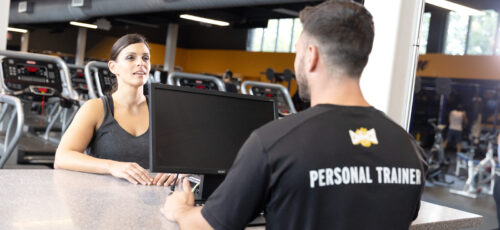
How Long Should It Take for My Workouts to Produce Results?
Patience is a virtue—but it helps to understand when you'll begin to make gains.
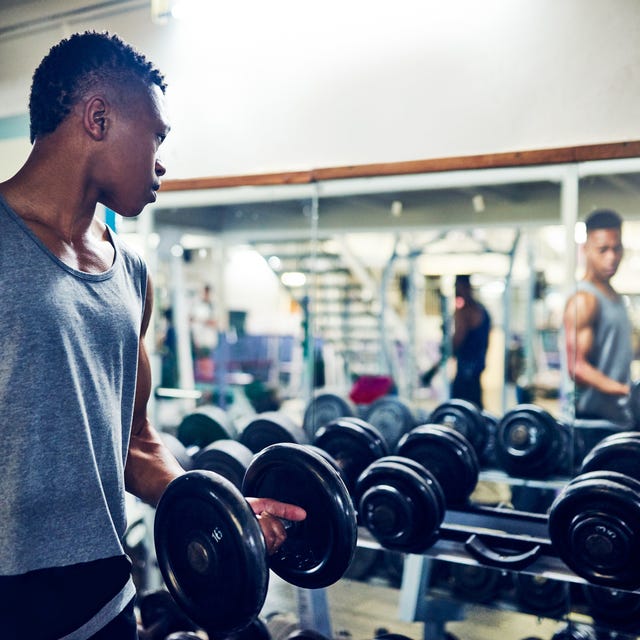
Our product picks are editor-tested, expert-approved. We may earn a commission through links on our site. Why Trust Us?
Don’t be discouraged if you feel like you haven’t noticed the results you were after immediately. There are lots of changes happening behind the scenes that are worth celebrating.
Just know, exactly how long it takes to see results from your workout routine will vary from person to person. “There are numerous factors that contribute to these timelines,” says Kurt Ellis , C.S.C.S. , owner and coach at Beyond Numbers Performance. “Factors such as genetics, age, gender, type of training program, and lifestyle indicators can impact how soon someone will see changes.”
Here, Ellis digs into a few of these key elements, shares some of the results you can expect to see and when, and offers other perspectives on what it means to “see results” so you can celebrate your wins through every stage of your journey.
How Long Does It Take to See Results From Working Out
You might assume that seasoned gym-goers would see results sooner because they aren’t new to this game, but that’s not necessarily the case, according to Ellis. “Beginners will usually experience results sooner than more advanced athletes because both their baseline level of fitness and training age [how long you’ve been working out] is lower,” he says.
Think of it this way: If you're a beginner staring at a ladder from the floor, there are more rungs to climb, and therefore more levels to reach—and with each rung, you’re making progress. Whereas more advanced athletes may have already hit some of the lower rungs and milestones and have less distance to travel to the top.
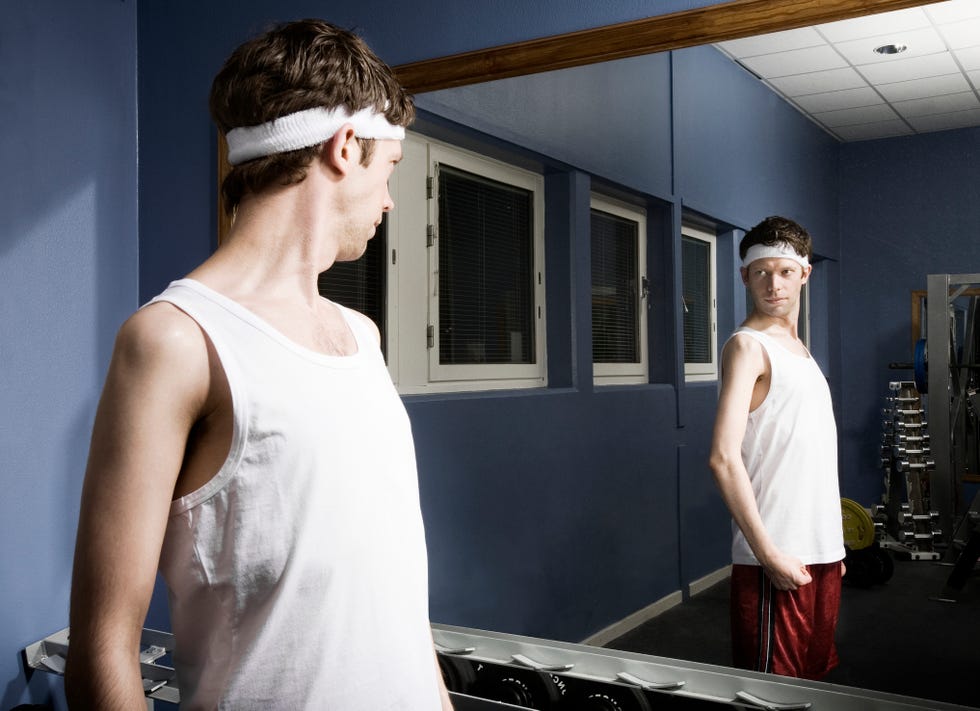
There's also the matter of neurological adaptations, a.k.a. "newbie gains." When beginners start strength training, neural adaptations will lead to rapid progress in strength (and to a lesser degree, muscle growth). That early progress is exciting, but it only lasts so long (and probably won't take you up to the point of accomplishing your larger training goals, anyway). Once you go beyond that initial progress and maybe even hit a plateau , it's important to remember that you'll still see results—just more slowly than you did at the start.
One often-cited study from 2009 shows that it takes a minimum of 18 days for someone to form a habit once a decision to change a behavior is made, and that goes for athletes of all kinds, explains Ellis. So you might consider that timeframe your first benchmark toward progress—and that should be celebrated. Deciding to work toward something, make changes, and commit to them is no easy feat.
From there, “typically you can see tangible changes—whether it be body composition, change in resting heart rate, etc.—within two to six weeks,” says Ellis. That breaks down to roughly two to four weeks for beginners and four to six weeks (or more) for more seasoned athletes, he adds.
Signs You're Getting Fitter
Even if weight loss is your goal, the number on the scale is certainly not the only meaningful metric to measure against your progress. (Not to mention, the benefits of fitness and staying active go far beyond just your weight or how you look .)
Neurological Adaptations
Lots of the initial “results” from your workouts are happening on an imperceptible, cellular level. As outlined above, whenever you ask the body to do new or challenging things—trying a new sport, learning crow pose in yoga, or merely starting a workout routine for the first time—the brain has to create new pathways to signal the body to perform in ways it hasn’t before. “Neurological adaptations are changes that take place within the nervous system, which play a very important role in improving strength, coordination, motor learning and overall performance,” explains Ellis.
“ Neural plasticity [the brain's ability to adapt and evolve] allows you to continue developing new pathways throughout your fitness journey,” says Ellis. “Because of this, it's beneficial to manipulate different variables in a training program such as incorporating a variety of movements and some novelty and proper training stimuli. It's important to continually build on progress to strengthen and stimulate these neural pathways.”
Also, “one of the earliest changes that people would notice is a change in energy levels,” says Ellis. Just as microtears in your muscles caused by strength training help the body to repair, grow, and come back stronger, there's a similar process for your energy levels. Exerting yourself during a workout might make you feel taxed during a session, but this challenge actually signals to your body to produce more mitochondria, the energy stars of your cells, according to Harvard Health .
Also, thanks to the release of feel-good hormones like endorphins during exercise, your new fitness routine can also give you a mood boost. Physical activity of all kinds releases endorphins, but research is still evolving as to what type of training or workout intensity gives you the biggest endorphin rush. For example, one 2017 study published in the journal Neuropsychopharmacology suggests that high-intensity training is the way to go if you’re looking for that “exercise high.”
Another big result you'll likely notice fairly early after beginning a new fitness routine or training program is better sleep. Don't underestimate this as a key factor to your overall health. Adequate rest can be a crucial factor for maintaining motivation for training both in the short and long term, according to one small 2013 study .
Other Benchmarks to Consider to Track Workout Results
In addition to some of the more lifestyle measures like energy and sleep, if you’re someone who is looking for something a bit more measurable, Ellis suggests one of two quantitative benchmarks depending on your fitness goals.
For those looking for results from strength training, you could track progress against absolute strength. This is often measured by the one-rep max (1RM) test —the heaviest weight you can lift in a single exercise, such as a bench press or a barbell squat, for one rep at the full range of motion and with proper form. (If you're newer to strength training, we suggest you test for a three to five rep total, then use a training load chart for a one rep max rather than going all-out for a single rep.) You could also look at your progress in relative strength, which takes your body into account, looking at how much you can lift compared to your body weight, says Ellis. Simply divide the weight lifted by your body weight to find this measure.
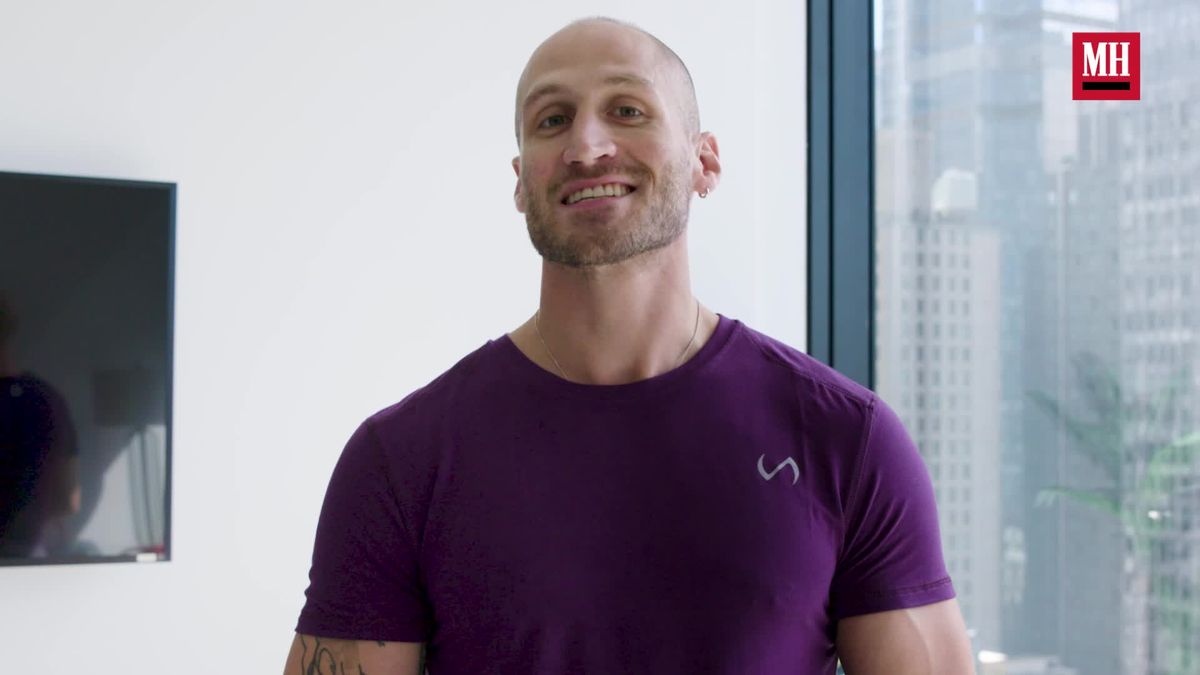
If you have more endurance and cardio-focused goals, the universally used metric to measure progress is your VO2 max . This essentially measures how efficiently your body is able to use oxygen. But know this: Accurately tracking your VO2 max requires lots of fancy equipment and is best done in a lab setting. Luckily, due to the demand of athletes wanting a more realistic way to assess their numbers, many fitness trackers and smartwatches offer a VO2 max estimate, which you can use to track your progress.
Use SMART Goals
Remember that when it comes to thinking about your workout results, how you set your goals initially can make a big difference. "Setting SMART (specific, measurable, attainable, realistic, time-bound) goals are major keys to success,” says Ellis. “Athletes will typically see long-term, sustainable results when they include process goals along the way to their big-picture goals.”
Think about it: Getting swole or " getting abs " involves so much more than simply working out. “Highlighting the importance of other aspects, such as sleep quality, proper nutrition principles, and joining a community, go a long way in setting habits that can change the trajectory for your overall well being for the better,” he says. Once you can think of your workout routine as being just one aspect of a more comprehensive healthy lifestyle, you might have an easier time staying patient.
.css-1fpt53b{height:1.25rem;}@media(max-width: 48rem){.css-1fpt53b{overflow:unset;line-height:1.25rem;}}@media(min-width: 48rem){.css-1fpt53b{line-height:1.25rem;}}.css-1fpt53b:before{background-color:#D2232E;color:#fff;margin-right:0.625rem;width:1.25rem;height:1.25rem;content:'';display:block;} Fitness
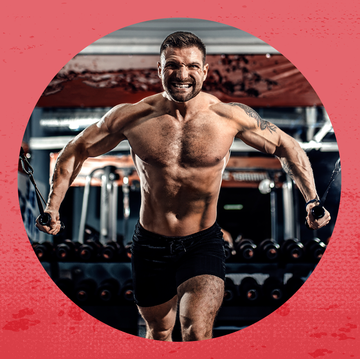
Perfect Your Pushup by Avoiding These 3 Mistakes
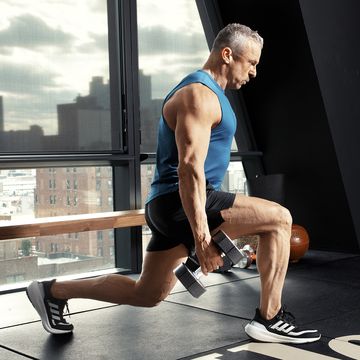
Build Your Back, Biceps, and Glutes

Build Your Chest, Legs, and Shoulders
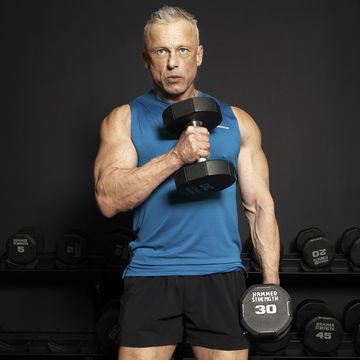
Build Back, Hamstring, and Biceps Muscle
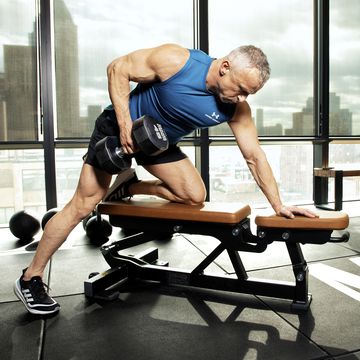
3 Training Tips for Men Over 50
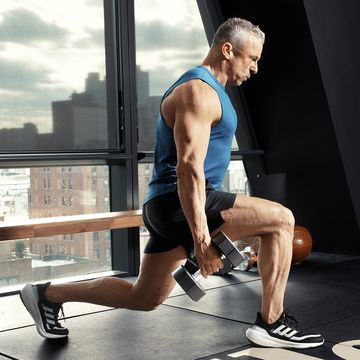
3 Exercises for Men Over 50 to Build Muscle
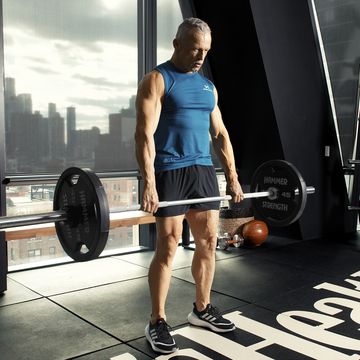
Build Muscle at Any Age With Max Muscle at 50

Ernie Hudson Shares His Workout Motivations at 78
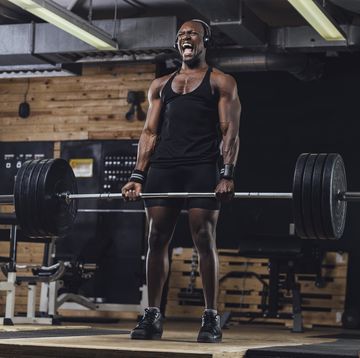
What You Need to Join the 1,000-Pound Club
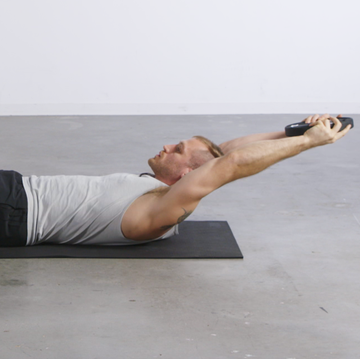
Why You Need to Master the Hollow Hold

The Best Moisture-Wicking Socks for Sweaty Feet

How to Start and Keep an Exercise Journal: A Guide to Workout Diaries
An exercise journal, also known as a workout diary, is a powerful tool that can greatly enhance your fitness journey. By documenting your workouts and progress, you can gain valuable insights, stay motivated , and track your goals effectively.
Here is a comprehensive guide to starting and maintaining an exercise journal that enhances your fitness journey!
Benefits of Keeping an Exercise Journal
Journal keeping is a healthy habit that enables you to reflect and learn more about yourself. Keeping an exercise journal can help you unlock your fitness potential. Let’s explore the many benefits that come with maintaining an exercise journal—some may surprise you!
Accountability and Motivation
When it comes to accountability and motivation, an exercise journal can help you stay on track and inspired. Here are some reasons why:
1. Set Clear Goals: Writing down your fitness goals in your exercise journal helps establish a clear vision of what you want to achieve. This boosts your accountability and motivation.
2. Monitor Progress: By recording your workouts, you can see how far you’ve come and celebrate your achievements. This progress tracking keeps you motivated.
3. Hold Yourself Accountable: Writing down your exercise routine and commitment in your journal holds you accountable to yourself. It serves as a reminder of your commitment to your fitness journey and keeps you motivated to stick to your plan.
4. Stay Motivated: By recording your workouts, it becomes easier to establish a routine and stay motivated. Consistency is key to achieving fitness goals, and an exercise journal helps cultivate this discipline.
Editor’s Note : As start your exercise journal, set smaller more attainable goals as you work towards consistent growth. Big goals are important, but breaking them into smaller, achievable ones will keep you excited and motivated!
Remember, an exercise journal has the power to boost your accountability and motivation. By setting clear goals, tracking progress, holding yourself accountable, and staying consistent, you can achieve remarkable results.
Tracking Progress and Goals
In the same way that keeping a planner can help you achieve more in your available time, an exercise journal can add clarity to your fitness goals. Tracking progress and goals in your exercise journal is essential for achieving fitness success. It is crucial to set specific goals such as weight loss, strength gains, or improved endurance. For instance, you can aim to lose 10% of your body weight or increase your bench press by 20 pounds .
Before beginning your workout routine, make sure to record baseline measurements, including your current weight, body measurements, and fitness level. This will help you accurately track your progress over time.
Don’t forget to keep track of your workouts by recording important details like the date, type of exercise, duration, and intensity. For example, you can note running 3 miles in 30 minutes at a moderate pace.
Regularly reviewing your journal will allow you to monitor your progress towards your goals. Make a note of any increases in the amount of weight you can lift, improvements in your endurance, or changes in your body composition.
Identifying Patterns and Adjusting Workouts
Identifying Patterns and Adjusting Workouts is crucial for optimizing your exercise routine. Pay attention to trends and make necessary adjustments to consistently progress towards your fitness goals. Here is a step-by-step guide on effectively identifying patterns and adjusting workouts:
1. Examine your workout logs: Regularly review your exercise journal to identify recurring patterns or trends. Look for factors such as exercise types, intensity levels, and durations that consistently lead to positive or negative outcomes.
2. Analyze your progress: Assess your progress based on your goals and objectives. Take note of improvements and challenges. This analysis will provide valuable insights into what is working and what needs adjustment.
3. Identify strengths and weaknesses: Based on your analysis, determine your strengths and weaknesses in exercises, muscle groups, or specific skills. This will help you focus on areas that need further development or modification.
4. Adjust exercise selection: If certain exercises consistently lead to positive results, incorporate more of them into your routine. If you plateau or experience issues with specific exercises, explore alternative options or variations to target the same muscle groups.
5. Modify intensity and duration: Adjusting the intensity and duration of your workouts can significantly impact your progress. Gradually increase the intensity if you’re not challenging yourself enough. Reduce intensity or allow for more rest and recovery if you’re consistently fatigued or uncomfortable.
6. Experiment with workout order: The order of exercises can affect your performance and results. Try different sequencing to enhance workout efficiency.
7. Seek professional guidance: If you’re unsure about adjustments or need personalized guidance, consult a fitness professional. They can provide expert advice tailored to your needs and goals.
By actively identifying patterns, analyzing progress, and making necessary adjustments, you can optimize your workouts for maximum efficiency and effectiveness. Remember, consistency and adaptability are key to long-term fitness success.
How to Start an Exercise Journal
Get ready to elevate your fitness game and reach your goals with the power of journaling. Let’s dive in and discover how to start an exercise journal that works for you!
Choose the Right Format
When beginning an exercise journal, it is essential to select the appropriate format. Follow these steps:
1. Determine your preferences : Decide whether you prefer a digital or physical format. Some individuals favor apps or online platforms, while others prefer a notebook or journal.
2. Evaluate your needs : Take into consideration the features that are important to you. If you enjoy electronically tracking your progress, look for apps that offer this capability. If you prefer physical journals, consider factors such as size, layout, and available space for notes.
3. Consider accessibility : Choose a format that is easily accessible to you. Mobile apps are ideal if you are always on the go. Physical journals are suitable if you enjoy the experience of writing with pen and paper.
4. Experiment and make adjustments : It may require some trial and error to find the best format for you. Do not hesitate to try different options and make necessary adjustments as needed.
By selecting the right format for your exercise journal, you ensure consistent use. Taking into account your preferences, needs, and accessibility will help you find a format that motivates effective tracking of your workouts. Stay consistent and make any necessary adjustments to enhance your workout experience and ensure efficient progress tracking.
In a famous quote by Steve Jobs , he stated, “ The most powerful person in the world is the storyteller. ” This applies to choosing the right format for an exercise journal. The format you choose should allow you to tell your own story of progress and growth. So, embark on your exercise journal journey, choose the right format, and start documenting your fitness journey today!
Set Goals and Establish a Schedule
Setting goals and establishing a schedule are crucial steps to start an exercise journal. Here is a step-by-step guide:
1. Reflect on your fitness goals and determine specific, measurable objectives.
2. Consider your available time and commitments . Determine how often and for how long you can realistically exercise each week. Set dedicated time slots for your workouts.
3. Create a schedule outlining the days and times for exercise. This will establish a routine and prioritize your workouts.
4. Consider the types of workouts you want to do. Decide if you will focus on cardio, strength training, or flexibility exercises and allocate appropriate time for each.
5. Be flexible and open to adjusting your schedule as needed. Life may interfere, so be prepared to adapt and rearrange your workouts if necessary.
6. Share your schedule with a workout partner or trusted friend to hold yourself accountable and stay motivated.
7. Regularly review goals and the schedule to ensure alignment with progress and evolving fitness needs. Adjust goals and schedule as necessary for continued challenge and progress.
By setting goals and establishing a schedule, you lay a solid foundation for your exercise journal, increasing your chances of success and commitment to your fitness journey.
Decide What to Track
When deciding what to track in your exercise journal, consider your fitness goals and what information will be most helpful. Follow these steps to determine what to track:
1. Identify your fitness goals: Determine what you want to achieve through your exercise routine. Whether it’s weight loss, strength building, or improving fitness, know your goals to determine what aspects of your workouts to track.
2. Consider the type of exercise: Different exercises have different metrics to track. For example, for cardio, track distance covered or average heart rate. For strength training, track weight lifted or number of repetitions.
3. Think about duration and intensity: Decide whether to track workout duration or intensity. Tracking duration shows how much time you dedicate to fitness, while tracking intensity gauges workout challenge.
4. Take note of any health considerations: If you have health conditions or limitations, track modifications or adjustments made to ensure safe and effective exercise.
Pro-tip: Don’t overwhelm yourself by tracking too much at once. Start with key metrics aligned with your goals, and gradually add more as you become comfortable. Remember, tracking provides insights and motivation, so choose information that benefits you.
What to Include in Your Exercise Journal
Discover the essential elements to include in your exercise journal! From recording the date and time of your workout to noting the type of exercise, duration and intensity, and even jotting down how you felt afterwards, each sub-section of your journal serves a specific purpose. So, whether you’re tracking your progress, finding patterns in your performance, or simply reflecting on your fitness journey, these key components will shape a comprehensive exercise journal that keeps you motivated and accountable.
Date and Time of Workout
Recording the date and time of each workout session in your exercise journal is crucial. This helps track consistency and identify patterns in your exercise habits. By noting the date and time , you can monitor progress and stay on track with your fitness goals. For instance, you may notice a routine of morning workouts on weekdays but struggle to find time for exercise on weekends.
Recording the date and time allows you to assess how different times of the day impact your performance and energy levels during workouts. You may find more energy and focus during morning sessions compared to evening sessions, or vice versa.
Incorporating the date and time of your workouts helps schedule future exercise sessions more effectively. If you consistently have more energy in the morning, prioritize morning workouts for optimal performance and results.
Type of Exercise
Start an exercise journal to track the type of exercise you do. This helps you analyze your workout routine and make necessary adjustments. Types of exercises to include in your journal:
- Cardiovascular exercises: running, jogging, cycling, swimming. These elevate your heart rate and improve endurance.
- Strength training: weightlifting, resistance band workouts, bodyweight exercises. These build and tone muscles.
- Flexibility exercises: stretching, yoga, pilates. These improve flexibility and range of motion in your joints.
- High-intensity interval training (HIIT): alternating between intense bursts of activity and periods of rest or lower-intensity exercise. Examples include sprint intervals and circuit training.
- Aerobic exercises: dancing, kickboxing, aerobics classes. These improve cardiovascular fitness.
- Low-impact exercises: walking, swimming, using an elliptical machine. These are gentler on the joints and suitable for those with joint issues or injuries.
Pro-tip: Incorporate a variety of exercises in your routine to challenge different muscle groups, prevent boredom, and enhance overall fitness. Choose exercises that align with your fitness goals and abilities.
Duration and Intensity
When tracking workouts in an exercise journal, include details about each session’s duration and intensity . Accurate recording allows for effective progress monitoring and evaluation over time.
To capture this information in your exercise journal, create a table with the following columns:
By specifying the date, exercise type, duration, and intensity in each row, a clear record of your workouts is provided.
Duration refers to the time spent on the exercise, measured in minutes. For example, if you swam for 40 minutes on February 5, 2023, record “February 5, 2023” under the date column, “Swimming” under the exercise type column, and “40” under the duration column.
Intensity represents the level of effort or difficulty on a scale of 1 to 10. It indicates how hard you pushed yourself during the workout. If a high-intensity interval training (HIIT) session was challenging but manageable, rate the intensity as “7” on the scale.
Including duration and intensity in your exercise journal facilitates more effective review and analysis of your workouts. You can track improvements in endurance and adjust workout intensity accordingly. It helps identify patterns in your routine and make optimizations for your fitness journey.
Notes on How You Felt
When keeping an exercise journal, it’s important to note how you felt during your workouts. These notes can provide insights and help you adjust your routine for optimal results.
Pay attention to your energy levels : Did you feel energized and motivated ? Or tired and sluggish ? Noting your energy levels can help you identify patterns and adjust your workout intensity or duration.
Monitor your mood : Did you feel happy and positive ? Or stressed and anxious? Your mood can impact your exercise performance. Keeping track of how you feel can help you understand the emotional benefits of your workouts.
Assess physical sensations : Note any muscle soreness , fatigue , or discomfort . These notes can help you determine if you need more rest or need to modify exercises.
Consider mental focus : Were you able to stay focused and engaged? Or were you distracted and unfocused? Your mental state can affect your workout quality. Recording your mental state can help you optimize your focus and concentration.
Reflect on overall satisfaction : After each workout, think about how satisfied you were. Did you enjoy the workout? Did it meet your expectations? These notes can help you determine which exercises or activities you find most enjoyable and fulfilling.
Sarah started keeping an exercise journal and recorded how she felt during her workouts. She noticed that on days when she felt energized and motivated, she pushed herself harder and achieved better results. On the other hand, when she felt tired and sluggish, her workouts were less intense and less effective.
Armed with this information, Sarah adjusted her routine, prioritizing rest and recovery when needed. She also discovered that incorporating activities she enjoyed, like dancing and hiking, made her workouts more satisfying. Sarah’s exercise journal became a powerful tool in understanding the impact of her emotions and physical sensations on her exercise performance, leading to improved well-being.
Tips for Maintaining Your Exercise Journal
Looking to maintain your exercise journal? Let’s discover some effective tips to keep your fitness journal on track. Find out how to transform journaling into a habit, the importance of being consistent and honest in tracking your progress, and explore the world of technology and apps that can elevate your journaling experience. Get ready to take your fitness journey to the next level with these journaling strategies!
Make It a Habit
When it comes to keeping an exercise journal, one key to success is making it a habit. By incorporating exercise journaling into your daily routine, you can stay motivated, track progress, and achieve fitness goals effectively.
To make exercise journaling a habit:
- Set a specific daily writing time. Consistency is crucial.
- Keep your exercise journal visible. Place it on your bedside table, in your gym bag, or on your desk.
- Create a routine for journaling. Reflect on your workout immediately after it, while it’s fresh in your mind.
- Start small and increase commitment gradually. If daily feels overwhelming, begin with a few times a week and work up to daily entries.
- Make journaling enjoyable. Use colorful pens, stickers, or inspirational quotes.
- Reward yourself for consistency. Celebrate milestones or achievements in your journal.
- Stay accountable. Share your habit with a friend or join an online community for support and motivation.
Developing the habit of regularly writing in your exercise journal will help you stay on track with your workouts and cultivate discipline and commitment in your fitness journey.
Be Consistent and Honest
Consistency and honesty are crucial when maintaining an exercise journal. It is important to be consistent and honest when recording workouts, as this allows for accurate progress tracking and informed decisions about fitness routines.
Consistency means regularly updating the exercise journal with each workout. Establish a schedule that works for you and stick to it, whether that’s daily, weekly, or monthly. By being consistent, you can provide a comprehensive view of your exercise habits over time, helping to identify patterns and make necessary adjustments.
Honesty is equally important. When documenting workouts, make sure to include accurate details about the date, time, type of exercise, duration, and intensity. This level of honesty allows for tracking progress and improvement over time.
Being honest also includes noting how you felt during and after each workout. Pay attention to any physical or emotional changes, such as fatigue or improved mood. This important information helps identify factors that affect performance and well-being.
Being consistent and honest in the exercise journal creates a reliable record of your fitness journey. It allows for reflection on achievements, identification of areas for improvement, and adjustments to the routine accordingly. Always remember that the exercise journal is a tool for personal growth , so be consistent and honest with yourself.
Use Technology and Apps
Using technology and apps can enhance your exercise journal experience and help you achieve fitness goals. Here are ways to utilize technology and apps for tracking and improving workouts:
– Choose a fitness app : Many fitness apps can help you use technology and apps to track workouts, set goals, and monitor progress. These apps offer features like workout libraries , customizable training plans , and device syncing .
– Utilize wearable devices : Smartwatches or fitness trackers provide real-time data on metrics like heart rate , steps , and calories burned . These devices can sync with smartphone apps for easy tracking and performance analysis.
– Access online workout programs : Fitness websites and apps offer pre-designed workout programs created by professionals. These programs allow you to use technology and apps for detailed instructions and can be tailored to individual goals and fitness levels.
– Join online fitness communities : Engage with social media, forums, or fitness apps to use technology and apps to find motivation and support. These communities share workout ideas, tips, and success stories for inspiration and accountability.
– Use workout tracking features : Fitness apps have features for recording and tracking workouts, including exercise type, duration, intensity, and weight lifted. By using technology and apps, these records show progress over time and highlight areas for improvement.
Incorporating technology and apps into your exercise routine allows you to use technology and apps for easy tracking, progress monitoring, and motivation on your fitness journey. Make the most of these tools to boost your fitness endeavors and reach new heights.
Reviewing and Analyzing Your Exercise Journal
When it comes to reviewing and analyzing your exercise journal, there are a few key aspects to consider. We’ll delve into the sub-sections, covering how to celebrate your achievements, identify your strengths and weaknesses , and make necessary adjustments to your workout routine. By taking a closer look at your exercise journal, you can gain valuable insights into your progress and make informed decisions to optimize your fitness journey.
Celebrate Achievements
When it comes to maintaining an exercise journal, it is important to celebrate achievements. Recognizing and acknowledging progress can greatly boost motivation and maintain commitment to fitness goals.
One way to celebrate achievements is by taking the time to acknowledge and celebrate reaching milestones in your fitness journey . This could include completing a certain number of workouts, achieving a personal best , or reaching a specific weight or body fat percentage.
Another important aspect is to share these achievements with supporters of your fitness journey , such as friends , family , or fellow fitness enthusiasts . By sharing your accomplishments, you not only inspire others but also receive positive reinforcement.
It is essential to reward yourself when you achieve a goal. This can be in the form of buying a new workout outfit, treating yourself to a massage, or enjoying a favorite healthy meal or snack.
Reflection on your progress is crucial. Take the time to look back at your exercise journal and remind yourself of the goals you have achieved and the obstacles you have overcome. This reflection can boost your confidence and motivation.
After celebrating your achievements, it is important to set new goals to continue challenging yourself. Make sure these goals are realistic and attainable, aligning with your overall fitness aspirations.
Celebrating achievements in your exercise journal is a powerful way to stay motivated and focused on your fitness journey. It reinforces your progress and serves as a reminder of the hard work you have put in to reach your goals.
Identify Strengths and Weaknesses
Reflecting on your performance is crucial to personal growth and progress. Take the time to review your exercise journal and identify the exercises or workouts where you excelled . These moments of success represent your strengths – whether it’s achieving a personal best in lifting weights or setting an impressive running time. By recognizing your strengths, you can focus on activities that bring you joy and that you naturally excel at.
Consistency is another key factor to consider. Look for patterns in your exercise routine and pay attention to areas where you consistently struggle . These struggles may indicate weaknesses that require your attention. For instance, if you find it difficult to maintain a regular yoga practice, it may be a weakness that needs addressing.
It’s also important to assess any physical limitations or challenges that arise during your workouts. These limitations can be considered weaknesses that require modifications or additional attention. For example, if you struggle with flexibility, incorporating stretching exercises or seeking guidance from a trainer may be necessary.
Seeking feedback from others can also help you identify both strengths and weaknesses . If possible, ask a trainer or workout partner for their observations and feedback. Their external perspective can offer valuable insights that you may not be aware of, assisting you in your journey to improve.
Recognizing strengths and weaknesses helps you create a well-rounded fitness routine and improve your overall performance. By identifying your strengths, you can focus on activities that bring you joy and that you excel at, while addressing weaknesses allows you to concentrate on areas of improvement.
I have personally experienced the benefits of identifying strengths and weaknesses through my exercise journal. As I reviewed my journal over time, I noticed significant improvement in my strength for exercises like deadlifts and squats. This motivated me to set new goals and consistently challenge myself.
I also recognized the weakness in my upper body strength compared to my lower body. To address this, I incorporated specific exercises such as bench presses and pull-ups to target my upper body. Regularly identifying my strengths and weaknesses has allowed me to tailor my workouts and achieve a more balanced physique.
Make Adjustments to Your Routine
When maintaining a workout routine, it’s important to be flexible and make adjustments as needed. Here are steps to help you make adjustments to your routine:
- Assess your current exercise routine: Evaluate if you’re experiencing plateaus or if certain exercises are not challenging enough.
- Identify areas for improvement: Pinpoint specific areas in your routine that may need adjustment. This could include increasing exercise intensity, adding new exercises for different muscle groups, or changing workout duration.
- Set new goals: Clearly define your desired achievements with the adjusted routine, such as building strength, improving endurance, or losing weight.
- Experiment with different approaches: Incorporate various exercises, workout formats, or training techniques to find what works best for your body and keeps you motivated.
- Track your progress: Monitor changes in strength, endurance, and overall fitness levels to assess the effectiveness of your adjustments.
- Listen to your body: Pay attention to discomfort or pain, and make further adjustments if necessary to stay safe and injury-free.
- Consult a professional: Seek guidance from a fitness professional if unsure about making the right adjustments. They can provide personalized recommendations based on your goals and needs.
- Stay consistent: Commit to the adjustments for a reasonable period to see their effects before making further changes.
Remember, making adjustments to your routine is a normal part of the fitness journey. By being proactive and open to change, you can continue progressing towards your fitness goals.
Keeping an exercise journal is a great way to make progress, set new goals, and get the most out of your fitness routine!
Frequently Asked Questions
1. how do i start an exercise journal and what should i include in it.
To start an exercise journal, find a three-ring binder for flexibility and experimentation. Include the day and date, relevant information about your workouts, your physical and emotional state, and any external circumstances like weather or hormonal cycles. You can also track body metrics, such as weight, measurements, body fat percentage, calories consumed, and BMI, to monitor progress. Consider including motivational quotes or affirmations to inspire you on your fitness journey.
2. What is the difference between a fitness journal and a fitness tracker?
A fitness journal provides a comprehensive and personalized record of your fitness journey, allowing you to reflect and track progress over time. It focuses on logging workouts, meals, and other relevant information. On the other hand, a fitness tracker provides real-time data and motivation, focusing more on immediate feedback. Many people find value in integrating both approaches to get a complete view of their fitness efforts.
3. How can a fitness journal help me maintain a healthy lifestyle?
A fitness journal serves as a written record of your activities, feelings, and progress. It helps you stay accountable, reflect on your behaviors, and identify patterns that may hinder or support a healthy lifestyle. By tracking your exercise patterns, nutrition goals, and physical well-being, you can adjust your approach and overcome fitness roadblocks to maintain a steady and successful journey towards a healthy lifestyle.
4. Can keeping a fitness journal help me prevent injuries?
Yes, keeping a fitness journal can be a valuable tool for injury prevention. By logging your workouts and noting your physical and emotional state, you can identify patterns that may lead to overexertion or strain on your body. This awareness allows you to adjust your training approach, modify exercises, or consult a professional for guidance. Regular reflection on your journal can help you understand your body’s limits and optimize results while minimizing the risk of injuries.
5. What are the benefits of using a fitness journal template or printable fitness journals?
Fitness journal templates or printable fitness journals provide structure and guidance for your journaling practice. They can save you time by offering pre-designed pages with prompts and sections to fill in. Utilizing templates ensures that you include essential information, such as activity details, body assessment measurements, nutrition tracking, and progress monitoring, in a systematic way. This organization helps you stay focused, motivated, and consistent with your fitness journaling.
6. How can a fitness journal serve as a source of inspiration?
A fitness journal can be an excellent source of inspiration by documenting your journey and progress. By including photos, reflecting on successful activity days, and noting the positive impact of exercise on your physical and emotional well-being, you have a visual and written reminder of how far you’ve come. You can include motivational quotes or affirmations in your journal to uplift and inspire you on days when motivation is lacking.
Brooks Manley

Creative Primer is a resource on all things journaling, creativity, and productivity. We’ll help you produce better ideas, get more done, and live a more effective life.
My name is Brooks. I do a ton of journaling, like to think I’m a creative (jury’s out), and spend a lot of time thinking about productivity. I hope these resources and product recommendations serve you well. Reach out if you ever want to chat or let me know about a journal I need to check out!
Here’s my favorite journal for 2024:

Gratitude Journal Prompts Mindfulness Journal Prompts Journal Prompts for Anxiety Reflective Journal Prompts Healing Journal Prompts Cognitive Behavioral Therapy Journal Prompts Mental Health Journal Prompts ASMR Journal Prompts Manifestation Journal Prompts Self-Care Journal Prompts Morning Journal Prompts Evening Journal Prompts Self-Improvement Journal Prompts Creative Writing Journal Prompts Dream Journal Prompts Relationship Journal Prompts "What If" Journal Prompts New Year Journal Prompts Shadow Work Journal Prompts Journal Prompts for Overcoming Fear Journal Prompts for Dealing with Loss Journal Prompts for Discerning and Decision Making Travel Journal Prompts Fun Journal Prompts
How to Start and Keep a Dream Journal: A Guide to Dream Diaries
You may also like, 8 spiritual benefits of journaling (that might surprise you).
What is Creative Intelligence? An Introduction
What is deep work how to do more focused work that matters, leave a reply cancel reply.
Save my name, email, and website in this browser for the next time I comment.
- Productivity
- Favorite Journals
THE 10 BEST Moscow Health/Fitness Clubs & Gyms
Health/fitness clubs & gyms in moscow.
- Health/Fitness Clubs & Gyms
- Yoga & Pilates
- Hammams & Turkish Baths
- Roman Baths
- Thermal Spas
- Hair & Nail Salons
- 5.0 of 5 bubbles
- 4.0 of 5 bubbles & up
- 3.0 of 5 bubbles & up
- District Central (TsAO)
- 3rd Transport Ring (TTK)
- Garden Ring
- District Northern (SAO)
- Good for a Rainy Day
- Good for Kids
- Budget-friendly
- Good for Adrenaline Seekers
- Good for Couples
- Good for Big Groups
- Adventurous
- Hidden Gems
- Honeymoon spot
- Things to do ranked using Tripadvisor data including reviews, ratings, photos, and popularity.

1. ThaiBeautySpa
2. Limestone
3. Royal Thai Pokrovka

4. Swimming Pool Chaika

5. Lay Back Massage Club

6. Wai Thai Michurino
7. Cosmos Spa
8. Fitness Club Miltronic

9. Pride Club Fitness

10. Usadba Bannaya

11. Spa Algotherm

12. Grand Fitness

13. Galotsentr Solyanaya Peshhera

14. VITASPORT Wellness Club

15. Usadba Bannaya

16. I N T U ' T I O N 2/05
17. city fitness.

18. Novorizhskiye Baths

19. Vital Practice University
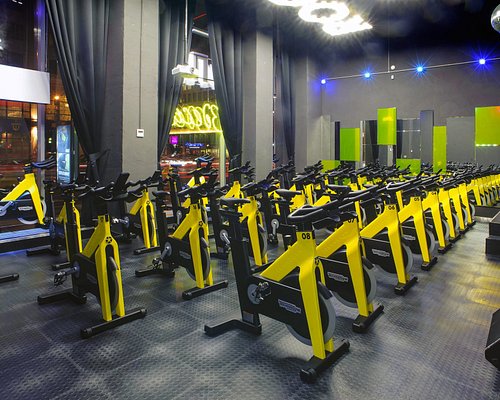
20. Rock The Cycle
21. Fresh Stretching

22. Massage and Health Center Il de Provane

23. Encore City

24. Fitness Center Mark Avreliy

25. LifeCity Venecia

26. Boxing Academy
27. salt cave salegrotte.

29. Art of Pilates

trending now in Lifestyle

Space laser transmission strikes Earth from 140 million miles...

My daughter heard 'monsters' in the wall — what we discovered...

I'm a longevity expert — I swear by these 5 supplements for...

Influencer runs the Brooklyn Half Marathon without registering...

Passengers awarded thousands for 'mental agony' of...

WFH employee fired after boss tracked her laptop activity breaks...

I'm a memory researcher — here's how to never forget someone's...

I lost 80 pounds and became a fitness instructor — thanks to...
Breaking news, forget counting steps — taking the stairs could save your life.
- View Author Archive
- Get author RSS feed
Thanks for contacting us. We've received your submission.

It’s baby steps to better health.
New research presented last week at a European cardiology conference found that folks who habitually take the stairs lower their risk of death from heart disease by roughly 39% compared to those who don’t commit to the climb.
Stair steppers also reduce their risk of dying from any cause by 24% and their overall risk of having a heart attack, heart failure or a stroke.
The analysis explored nine studies that included 480,479 participants between 35 and 84 years old with varying health histories.
“Based on these results, we would encourage people to incorporate stair climbing into their day-to-day lives,” said study author Dr. Sophie Paddock of the University of East Anglia in England.
“Our study suggested that the more stairs climbed, the greater the benefits — but this needs to be confirmed. So, whether at work, home, or elsewhere, take the stairs,” she added.
How many flights are required to reap these rewards? One study found that climbing six to 10 flights daily reduces the risk of premature death, while another determined that summiting five flights a day lowers the risk of cardiovascular disease by 20%.
Dr. Manish Parikh , chief of cardiology at NewYork-Presbyterian Brooklyn Methodist Hospital, explained that when it comes to taking the stairs, our bodies respond immediately and favorably.
“Your heart rate goes up, your cardiac output goes up, and your circulatory status improves,” he told NPR on Monday. “And all of those we know have positive impacts.”
Research published in February found that stair climbing can improve cardio-metabolic risk indicators — including body composition, blood pressure, cholesterol levels and insulin sensitivity — in just four to eight weeks.
Are climbing stairs better than walking steps?

Taking the stairs combines aerobic exercise with resistance training, accelerating the heart rate while building leg muscles, meaning stairs edge out steps when it comes to overall cardio conditioning.
Looking to add stairs to your fitness routine? Experts say to start slow and track your climb using a Fitbit or an Apple Watch.
Dr. Carlin Long, a cardiologist at the University of California, San Francisco, provided an aspirational range for climbing. “I think if people are able to achieve six to 10 flights of exercise on stairs a day, that that would be a good target,” he told NPR.
Share this article:

Best Gym in Moscow
Local recommendations from our my guide moscow team.

For more than 14 years Dr.LODER has been providing premium services at fitness market counting over 15 000 clients in Moscow. The history of this fitness center dates b

Viki Land Family club
No one can argue that Moscow is a booming metropolitan city where people can find the widest range of activities for themselves and their children..........

The Golden Ring Run
The Golden Ring Run is a unique project which will take place in the historical cities of the Golden Ring in Russia. The project first started in 2014 in Yaroslavl with t

Orange Fitness
Orange Fitness is a leading European and Russian fitness operator with 34 opened clubs, fitness school, and modern technologies of providing premium services. Large poo

Empire Swim Academy
At Empire Swim Academy we provide expatriates and residents of City of Moscow, Russia with the best quality swim programs that develop the physical, athletic and personal

The international chain of fitness centers World Gym takes a special place among leaders of fitness industry in the USA and all over the world. For over 40 years of histo

X-Fit is a chain of more than 50 modern, highly-equipped and comfortable fitness centers of premium and business class spread all over the country. One of the basic rul

Planeta Fitness
Planeta Fitness was founded in 1997 in Moscow and gained much popularity in Russia opening its centers in Saint Petersburg, Samara, Kazan and other cities. Planeta is the

World Class
With World Class you will always find a form of exercise that works for you: everything from energetic and effective classes to calm and harmonic relaxation. Discover how
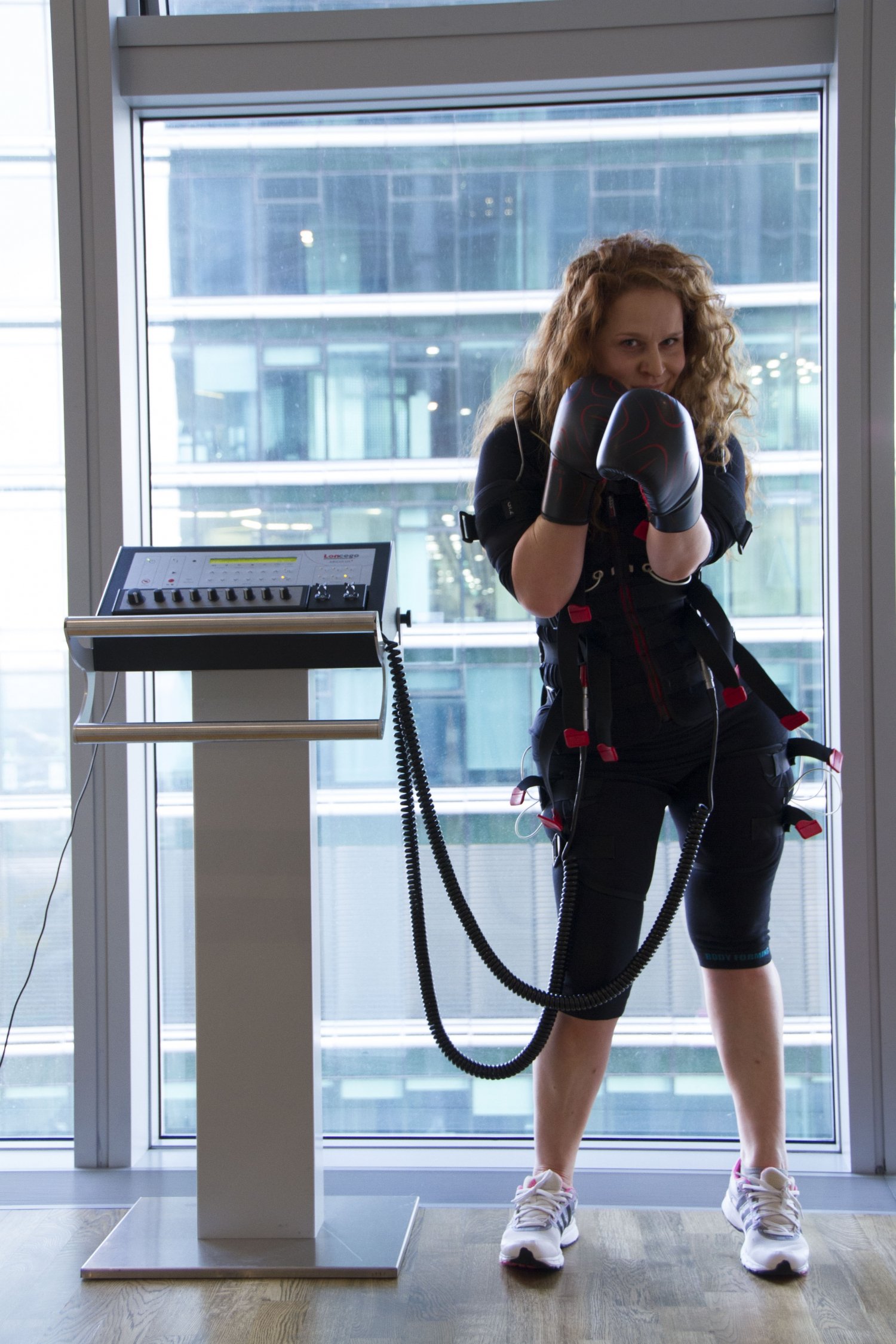
BODY FORMING
The EMS-centers “BODY FORMING” have been created for the purpose of health improvement and body modelling. Today “Body Forming” presents a chain of centers in Mos
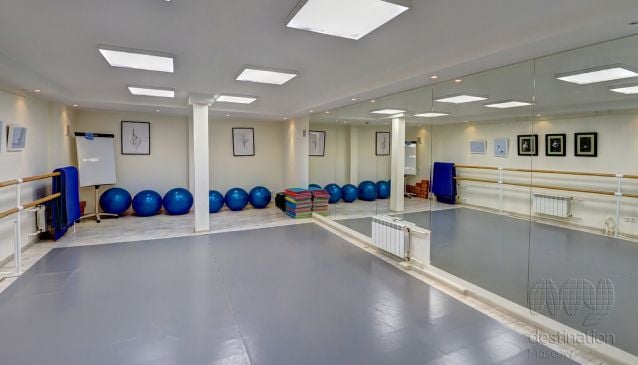
Clover Yoga & Dance Studio
Yoga and Dance Studio "Clover" opened its doors in one of the most beautiful places in the center of Moscow, in December 2014. From its very beginning the studio has beco
Create New Guide
Mini guides.
Login to create your guides for Moscow.
Add to My Guide
- Add to New Guide
Recommended Experiences in Moscow

USSR History, Mosaics Arts, Soviet Architecture & Statues
Walk through the Soviet Historical Era of Bishkek of Soviet Kyrgyzstan. Explore Soviet architect Buildings, Statues and Touch the mosaics art which were applied in the decades between the 1960s-1980s.

Massada and the Dead Sea in Russian
Massada and the Dead Sea – A journey to the lowest place in the world.

T-72 Tank Driving Heavy Metal Experience
You'll have the opportunity to drive a T-72 tank under the guidance of a professional instructor who will provide you with expert instruction and safety briefings before you get behind the controls.

T-55 Tank Driving Heavy Metal Experience
You'll have the opportunity to drive a T-55 tank under the guidance of a professional instructor who will provide you with expert instruction and safety briefings before you get behind the controls.

Moscow suburb and Central Market
One of the oldest and architecturally most valuable places in Riga is the Moscow Suburb, which first emerged just outside the walls of Riga in the 13th century.
Search, Compare, and Save up to 70%!
Local car rental comparison with my guide, free cancellation.
No need to worry if your plans change with free cancellation options available
24/7 Customer Service
All of our providers offer 24/7 support
500+ trusted car hire partners globally
Create & share your own guide to moscow with friends and family.
Add your recommended places to visit by browsing the website and pressing the icon.
Create your own guide of favourite 'must see' places
Earn your Local Expert badge by Sharing your guides with others
Get your guide seen by submitting it to the Mini Guides section
Must See Places For First Timers
Handpicked by a Local Expert

Places to watch the FIFA World Cup 2018

Best For Kids

We Are Part of the My Guide Network!
My Guide Moscow is part of the global My Guide Network of Online & Mobile travel guides.
We are now in 120+ Destinations and Growing. If you are interested in becoming a local travel partner and would like to find out more then click for more info about our Website Business Opportunity .
Nearby Destinations
- My Guide St Petersburg
- My Guide Warsaw
- My Guide Gdansk
- My Guide Stockholm
- My Guide Krakow
- My Guide Slovakia
- My Guide Budapest
- My Guide Copenhagen
- My Guide Berlin
No results found
{[{item.label}]}
- {[{data.title}]}
Events in Moscow
Filter Events by Sub-Category
- This Weekend
Please select a Date first.
SERIOUS RESULTS 4+
Teamup sports, designed for ipad, screenshots, description.
Guiding you through your health and fitness journey! - Book classes online in just a few clicks - Create your own exercise programmes or select from a range provided by the club - Track your progress from all your workouts - Keep track of your body measurements and progress - Take part in regular fitness challenges - Contact club staff directly - Interact and get to know your fellow members - See all the latest club news, offers and events - Refer Friends to the club online - Recipes Library - Video Workout Library Apple Health App Integration Track your progress with our HealthKit app integration to import and measure your daily steps, distance or calories burnt. Also use HealthKit to import your data from a range of different wearable devices.
App Privacy
The developer, TeamUp Sports , indicated that the app’s privacy practices may include handling of data as described below. For more information, see the developer’s privacy policy .
Data Not Linked to You
The following data may be collected but it is not linked to your identity:
- Health & Fitness
- Identifiers
Privacy practices may vary, for example, based on the features you use or your age. Learn More
Information
- App Support
- Privacy Policy
More By This Developer
TeamUp Members
Reps Up Basketball, LLC
Range Movement
Pluto-Basketball
Prenatal Fitness Studio
Morehouse Hoops Collective
12 episodes
In this powerful podcast series, we delve into the journey of overcoming food addiction and reclaiming control over our health. From battling cravings to finding sustainable strategies for long-term success, we explore the challenges and triumphs of conquering food addiction. Join us on this inspiring journey towards a healthier, happier life. Follow our podcast episodes for more insightful content on wellness and transformation. Let's support each other as we strive for better health and well-being. Become a supporter of this podcast: https://www.spreaker.com/podcast/overcoming-food-addiction-a-journey-to-health--6050719/support.
Overcoming Food Addiction: A Journey to Health Stacey Chillemi
- Health & Fitness
- APR 19, 2024
Overcoming Eating Disorders: A Raw Discussion
In this episode, dive into a gripping discussion about the pervasive misconceptions surrounding health, body weight, and diet culture. Join us our expert, Marcella Raimondo, unveils the truth about the impact of diet culture on mental and physical well-being. Gain valuable insights into food and body liberation and learn how society's distorted views can fuel eating disorders. Don't miss out on this eye-opening conversation that challenges the status quo. Website: https://marcellaedtraining.com/ Become a supporter of this podcast: https://www.spreaker.com/podcast/overcoming-food-addiction-a-journey-to-health--6050719/support.
- JAN 8, 2024
Breaking Free: Unleashing Your Path to Lasting Addiction Recovery & Finding the Perfect Addiction Counseling
In this extraordinary podcast, we will dive headfirst into the depths of addiction recovery, equipping you with the tools, strategies, and insights to break free from the shackles of addiction and embrace a life of true liberation. Moreover, we will guide you in finding the perfect addiction counseling that aligns with your unique needs and supports your journey toward lasting recovery. Join us as we bring together renowned experts, inspirational stories of triumph, and empowering techniques to help you reclaim control over your life. From uncovering the root causes of addiction to implementing effective coping mechanisms and building a support network, "Breaking Free" will serve as your guiding light on the path to sustainable recovery. Discover the power of mindset shifts, learn about evidence-based therapies, and explore a holistic approach to addiction counseling that addresses the physical, emotional, and spiritual aspects of your being. Our purpose is to empower you to overcome challenges, develop resilience, and unlock the extraordinary potential that resides within you. So, whether you are personally battling addiction, supporting a loved one on their recovery journey, or seeking to expand your knowledge and understanding of addiction counseling, "Breaking Free" is your gateway to lasting transformation. Don't miss out on this life-changing opportunity to rise above addiction and create a future filled with hope, joy, and purpose. Subscribe to our podcast on your preferred platform and connect with us on social media to stay updated with the latest episodes, expert interviews, and invaluable insights. For all links mentioned in the episode: THE LODGE IN DELRAY - https://thelodgedelray.com Become a supporter of this podcast: https://www.spreaker.com/podcast/conquering-food-addiction--6050719/support.
- JAN 7, 2024
How Your Food Choices Shape Your Health and Happiness
🎧 Tune in to the latest episode of "The Power Within," where we delve deep into the intriguing connection between our food choices and their impact on our overall well-being. 🥦🍎 Discover the secrets to unlocking a healthier, happier you through conscious eating habits. In this thought-provoking discussion, Stacey Chillemi sheds light on the profound relationship between our dietary decisions and their effects on our physical and mental health. Gain valuable insights, practical tips, and actionable strategies that will empower you to take control of your nutrition and cultivate a thriving life. Don't miss out on this transformative podcast episode! Tune in now to ignite a journey toward optimal health and lasting happiness. Website: https://foodandmoodlab.com/ Sponsored by Wellness Essential: Are you looking for a one-stop shop for health and wellness products? Visit Wellness Essential. Our online store offers high-quality vitamins, supplements, and cutting-edge technologies to enhance your overall well-being. Subscribe to our newsletter and get 15% off your first order. Discover a healthier you at Wellness Essential - Shop now! https://wellnessessential.store/ Become a supporter of this podcast: https://www.spreaker.com/podcast/conquering-food-addiction--6050719/support.
- JAN 6, 2024
A Powerful Podcast to Ignite Your Inner Strength and Conquer Your Relationship with Food
Welcome to an empowering podcast episode where renowned author and motivational speaker Bracha Goetz shares her transformative journey of overcoming food addiction. Join us as Bracha dives deep into her personal experiences, providing invaluable insights, practical strategies, and inspiring stories to help you break free from the chains of food addiction and reclaim control over your health and well-being. Get ready to unleash your inner power, cultivate a positive mindset, and embark on a life-changing path toward a healthier, happier you. Tune in now and embark on this incredible journey of self-discovery and empowerment! For all links mentioned in the episode: https://www.goetzbookshop.com Become a supporter of this podcast: https://www.spreaker.com/podcast/overcoming-food-addiction-a-journey-to-health--6050719/support.
- JAN 5, 2024
The Food Addiction Breakthrough: Harvard graduate Bracha Goetz Reveals the Secrets to Lasting Health and Self-Transformation
Join host Stacey Chillemi and special guest Harvard graduate Bracha Goetz on a fascinating journey of self-discovery as we delve into the topic of food addiction. In this episode, Bracha shares her powerful insights and strategies for overcoming food addiction and building an unstoppable mindset that empowers you to take control of your relationship with food and achieve lasting health. Listen in as she reveals the tools and techniques that have helped her and her clients find freedom from food addiction and transform their lives. Don't miss this thought-provoking and inspiring episode of [Podcast Name]. Tune in now to break free from the cycle of food addiction and take the first step toward a healthier, happier you. Website: https://www.goetzbookshop.com Sponsored by Wellness Essential: Are you looking for a one-stop shop for health and wellness products? Visit Wellness Essential. Our online store offers high-quality vitamins, supplements, and cutting-edge technologies to enhance your overall well-being. Subscribe to our newsletter and get 15% off your first order. Discover a healthier you at Wellness Essential - Shop now! https://wellnessessential.store/ Become a supporter of this podcast: https://www.spreaker.com/podcast/overcoming-food-addiction-a-journey-to-health--6050719/support.
- JAN 4, 2024
Food Addiction and How To Overcome It with Dr. Vera Tarman
Today, Stacey Chillemi will talk to Dr. Vera Tarman about food addiction and how to overcome it. Dr. Vera Ingrid Tarman is a world-renowned food addiction expert who writes, speaks, and treats people who suffer from sugar addiction and food addiction and who seek food recovery. Dr.Tarman’s primary goal is to put food addiction ‘on the table’ of services offered to people suffering from addictions. Food addiction is often dismissed or neglected, leaving many people without the necessary help and compassion to get well. As a recovering food addict, Dr. Tarman knows that food addiction is food serenity. Freedom from food addiction tastes excellent! Tune in to hear what Dr. Vera has to say! Website - https://addictionsunplugged.com/ Podcast - https://www.youtube.com/c/VeraTarmanMD Become a supporter of this podcast: https://www.spreaker.com/podcast/overcoming-food-addiction-a-journey-to-health--6050719/support.
- © Stacey Chillemi
Top Podcasts In Health & Fitness

IMAGES
VIDEO
COMMENTS
Nowadays, I love a mix of everything: yoga, running, weight lifting & swimming. 2. Rest is a part of training. I learned the hard way that rest is just as important as your workouts. It's so incredibly important to allow your body to rest so it can recover and grow, and most importantly, so you can utilise your training!
Shoulders (both arms down at your side, at the widest point from shoulder to shoulder). Chest (lift up your arms, wrap the tape measure around your chest, just above the nipple, and then lower your arms). Bicep (either left or right, but be consistent). Waist (at the belly button for consistency).
Prioritize rest, sleep, and proper nutrition. Treat yourself with kindness and listen to your body's needs. Nurturing your physical and mental well-being will optimize your energy levels and overall motivation. The Bottom Line. Staying motivated on your fitness journey is a lifelong process.
0. Embarking on a fitness journey refers to the intentional and structured pursuit of improving one's physical fitness, overall health, and well-being. It involves setting goals, adopting healthy lifestyle habits, and engaging in regular exercise and physical activity to achieve desired outcomes. A fitness journey is a personal and ...
Chloe Ting - Free Workout Programs. Today's Workout Completed! Track your daily workouts and your progress on your fitness journey. Teamwork Makes the Dream Work: Join a team challenge to motivate one another and work out together. Picture Perfect! Add photos and create collages to see your progress visually. Meal Planning Pro: Save and ...
In the quest for fitness results, patience and consistency are your allies. Understanding the timeline for workout results allows you to manage your expectations and stay committed to your goals. Whether you're in your first month or beyond a year, remember that the journey is as important as the destination.
The goal is to move your body. If going out is not possible, start with some light cardio, stretching, abs and core exercises like plank, jumping jack, skipping, squats, mountain climber, push ups ...
Day 3: Cardio, Strength, and Stretch. Workout 1: Beginner walking or cycling — Length: 10 to 13 Minutes. Workout 2: Basic strength— Equipment Required: Light dumbbells, an exercise ball or chair, and a mat— Length: 10 to 15 minutes. Workout 3: Soothing stretch.
Keep Track of Your Progress. Again, results breed results, so make sure you are tracking your workouts and achievements. Create a simple spreadsheet and add every workout in. This takes just a few seconds. After a few weeks or a month, it's fun - and motivating - to look at all that you've done.
The Gym Starter. Gold COast, Australia. +61 [email protected]. Hours. Learn how to overcome that fear of how to start your fitness journey and get a plan with what to do and why to help you achieve your goals.
A "rep" is a single repetition of a given exercise; think curling a dumbbell up and lowering it back down again. A "set" is a cluster of repetitions performed back-to-back with no rest in ...
A study published in the American Journal of Health Promotion emphasizes the importance of goal setting in fitness routines, showing that specific and challenging goals lead to higher performance outcomes compared to easy or no goals. To use this strategy for yourself, try implementing the S.M.A.R.T. goal-setting framework.
In fact, journaling goals can increase your likelihood of success by 42%! 2. Log your workouts. One of the primary benefits of keeping a fitness journal is being able to log your workouts. By recording your exercises, sets, reps, and weights, you can easily track your progress and see improvements over time.
Discover the timeline for fitness results in your journey. From immediate changes to long-term transformations, find patience and realistic expectations.
Understanding the timeline for seeing results is crucial for setting realistic expectations and staying motivated throughout the fitness journey. In the initial stages, clients may experience noticeable changes such as increased energy levels, improved mood, and enhanced endurance. These short-term progress markers serve as early indicators of ...
Once you go beyond that initial progress and maybe even hit a plateau, it's important to remember that you'll still see results—just more slowly than you did at the start. One often-cited study ...
An exercise journal, also known as a workout diary, is a powerful tool that can greatly enhance your fitness journey. By documenting your workouts and progress, you can gain valuable insights, stay motivated, and track your goals effectively. Here is a comprehensive guide to starting and maintaining an exercise journal that enhances your fitness journey!
Starting a new fitness journey is an exciting step toward improving your health and wellbeing. Whether you aim to lose weight, gain muscle, boost endurance, or simply lead a healthier lifestyle, the approach you take can make all the difference in achieving your goals. Here's a guide to getting started on your fitness journey, ensuring […]
Starting a new fitness journey can take a lot of effort, and while we wished we could see results right away, the truth is that it will not happen overnight, and depends on many factors, including ...
With Altitude Fitness Lifestyle, you can begin your fitness journey in no time. Get a fully personalized workout and meal plan tailored to your fitness goals. Progress tracking gets easier when you log your daily workout, record meals, update your check-ins and connect your fitness band & health kit, and get real-time updates via advanced ...
With Elevate Training Systems, you can begin your fitness journey in no time. Get a fully personalized workout and meal plan tailored to your fitness goals. Progress tracking gets easier when you log your daily workout, record meals, update your check-ins and connect your fitness band & health kit, and get real-time updates via advanced ...
Welcome to the Vitruvian Health podcast! Our goal is to empower busy professionals like you with invaluable resources, allowing you to focus on work while we handle your health and fitness. Join our exclusive community for insights and strategies to enhance your fitness journey - all for FREE. Con…
Walking tour around Moscow-City.Thanks for watching!MY GEAR THAT I USEMinimalist Handheld SetupiPhone 11 128GB https://amzn.to/3zfqbboMic for Street https://...
THE 10 BEST Moscow Health/Fitness Clubs & Gyms. 1. ThaiBeautySpa. Here my journey starts to the world of thai spa, I did not expect to get such a big choice of treatments and massage... 2. Limestone. Limestone is the biggest bouldering wall in Moscow.
sofiagfitness on April 29, 2024: "It can be frustrating when we don't see results as quick as we expected. We can easily forget that the journey is not the same for ever...". Sofia | It can be frustrating when we don't see results as quick as we expected.
"Based on these results, we would encourage people to incorporate stair climbing into their day-to-day lives," said study author Dr. Sophie Paddock, of the University of East Anglia in England.
The international chain of fitness centers World Gym takes a special place among leaders of fitness industry in the USA and all over the world. For over 40 years of histo ... A journey to the lowest place in the world. €52.52 From. Book Now! ... No results found. Wellness by Type . Show All; Wellness by Region . Show All; Moscow; Moscow ...
Download SERIOUS RESULTS and enjoy it on your iPhone, iPad, and iPod touch. Guiding you through your health and fitness journey! - Book classes online in just a few clicks - Create your own exercise programmes or select from a range provided by the club - Track your progress from all your workouts - Keep track of your body measurements and ...
In this powerful podcast series, we delve into the journey of overcoming food addiction and reclaiming control over our health. From battling cravings to finding sustainable strategies for long-term success, we explore the challenges and triumphs of conquering food addiction. Join us on this inspiring journey towards a healthier, happier life.
240 likes, 3 comments - alphafit.x on April 26, 2024: "(SWIPE ) FREE workout/meal programs ️ Follow for the best fitness content Transform excuses into results wi...". (SWIPE 👉) FREE workout/meal programs 🆓️😍 Follow for the best fitness content 🍑🍑🍑 Transform excuses into results wi... | Instagram